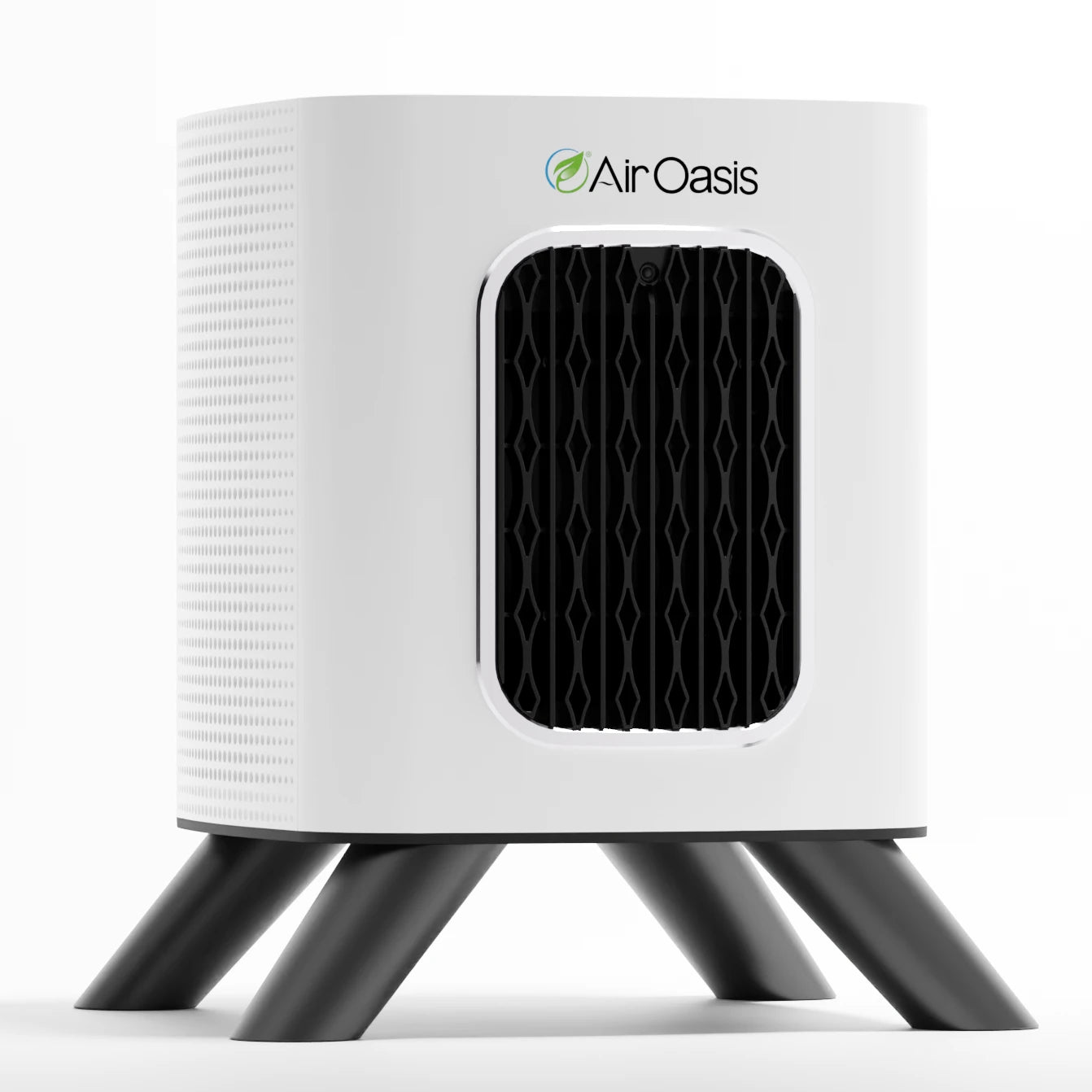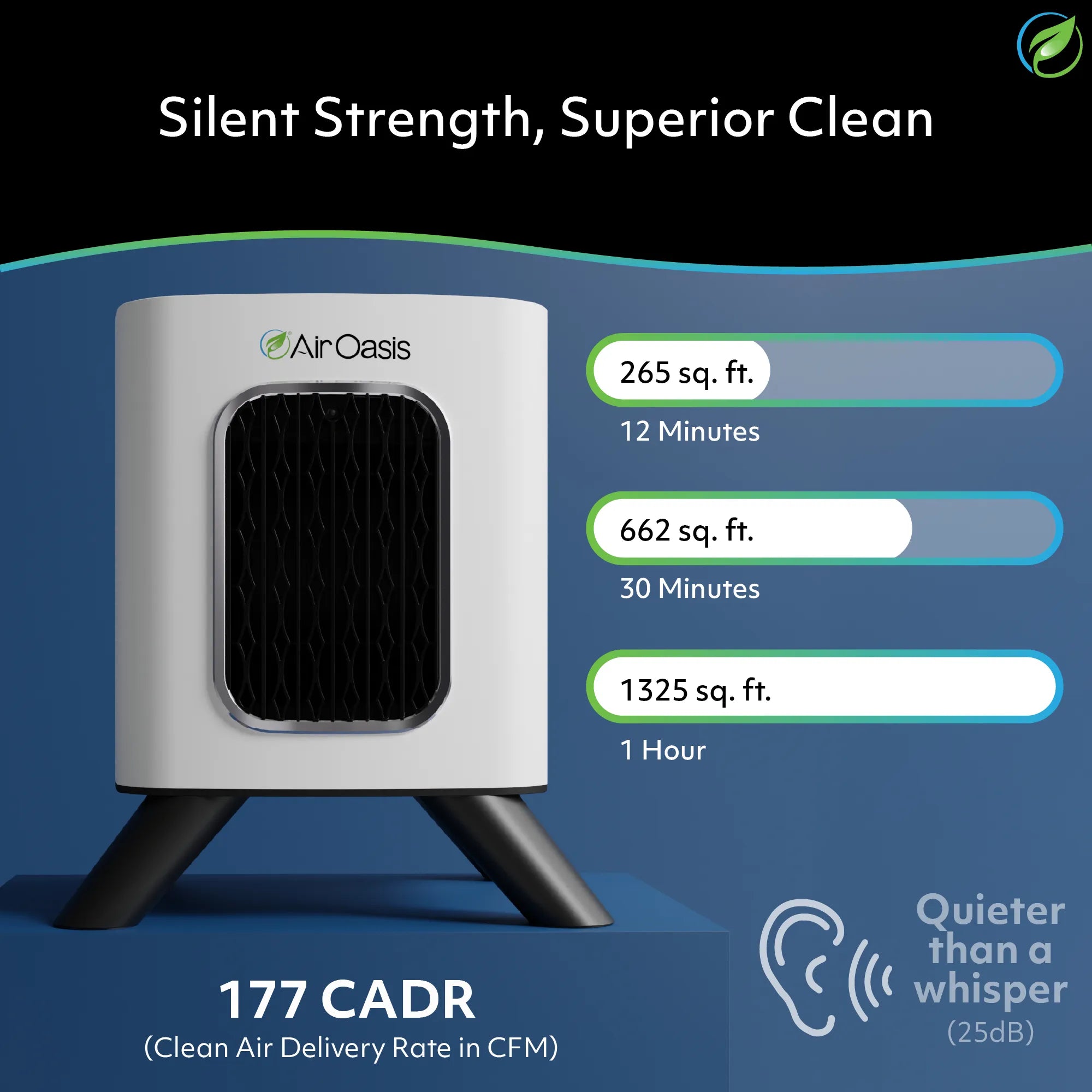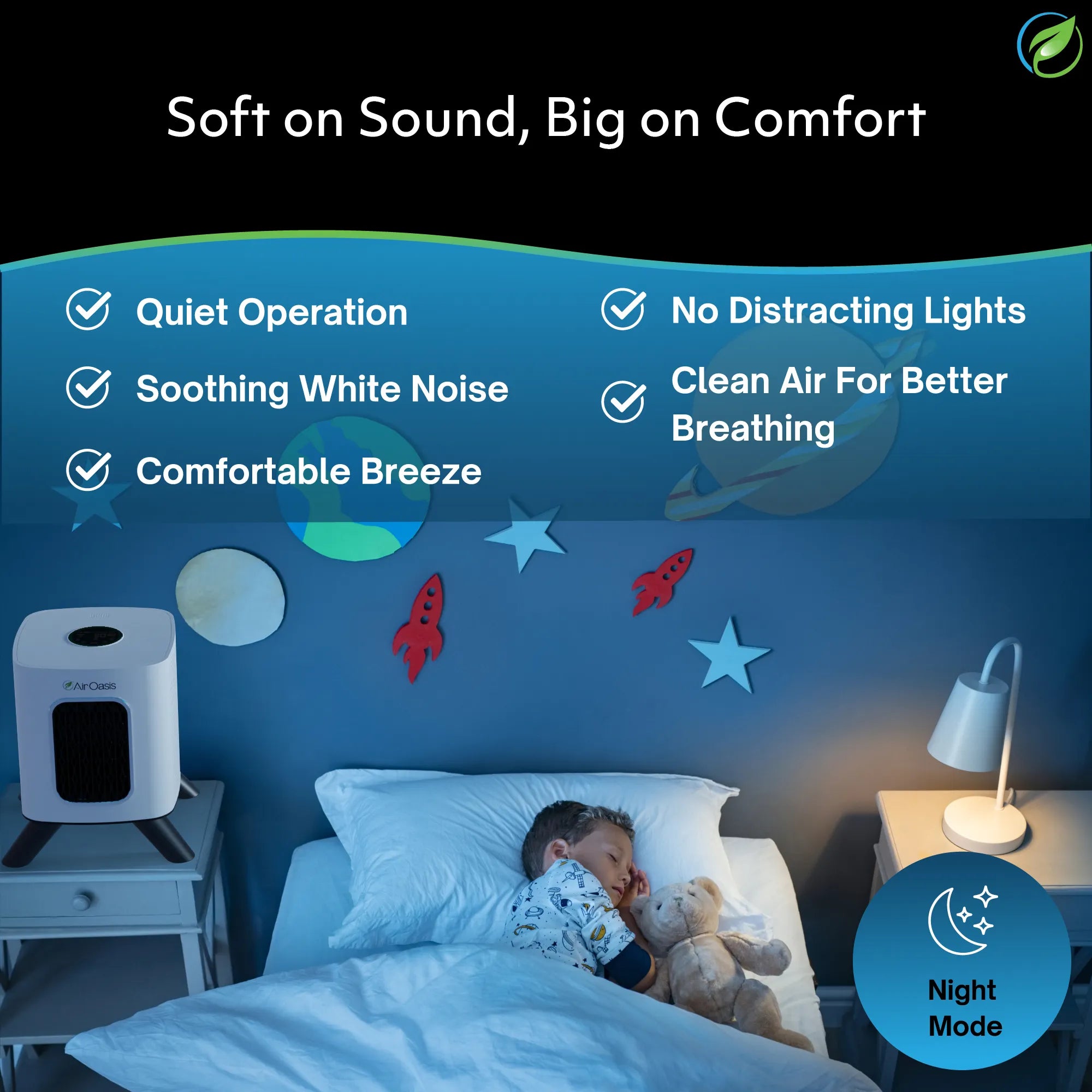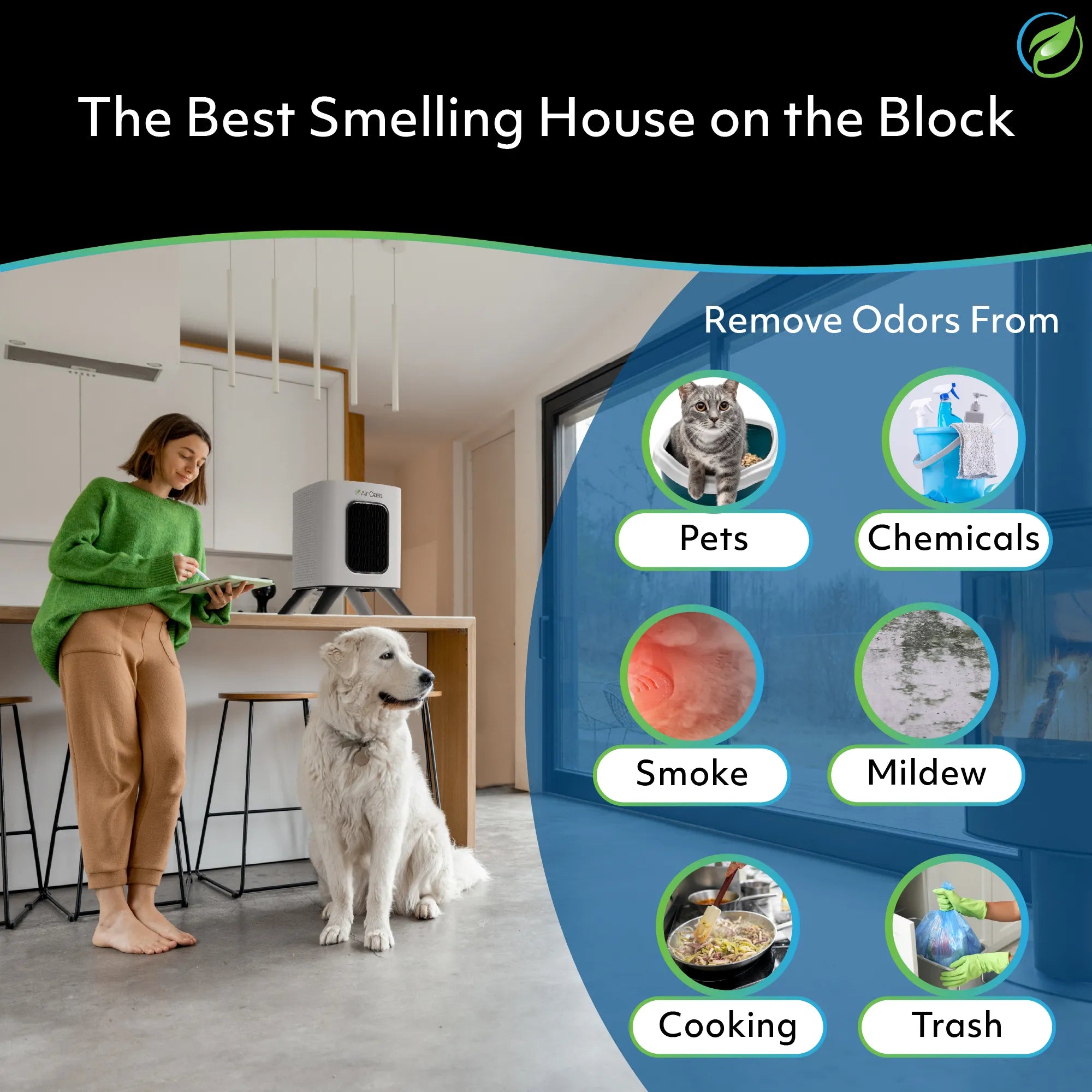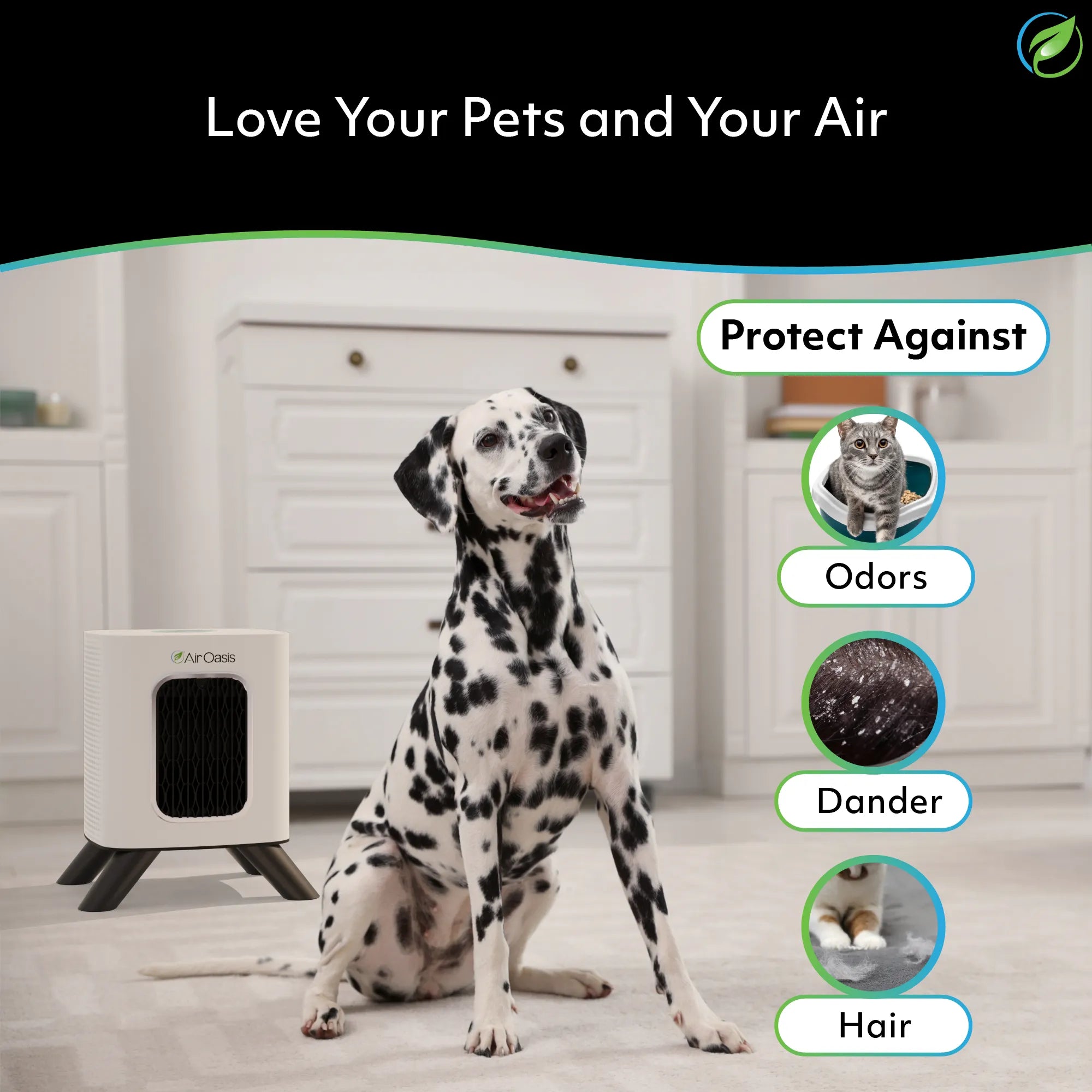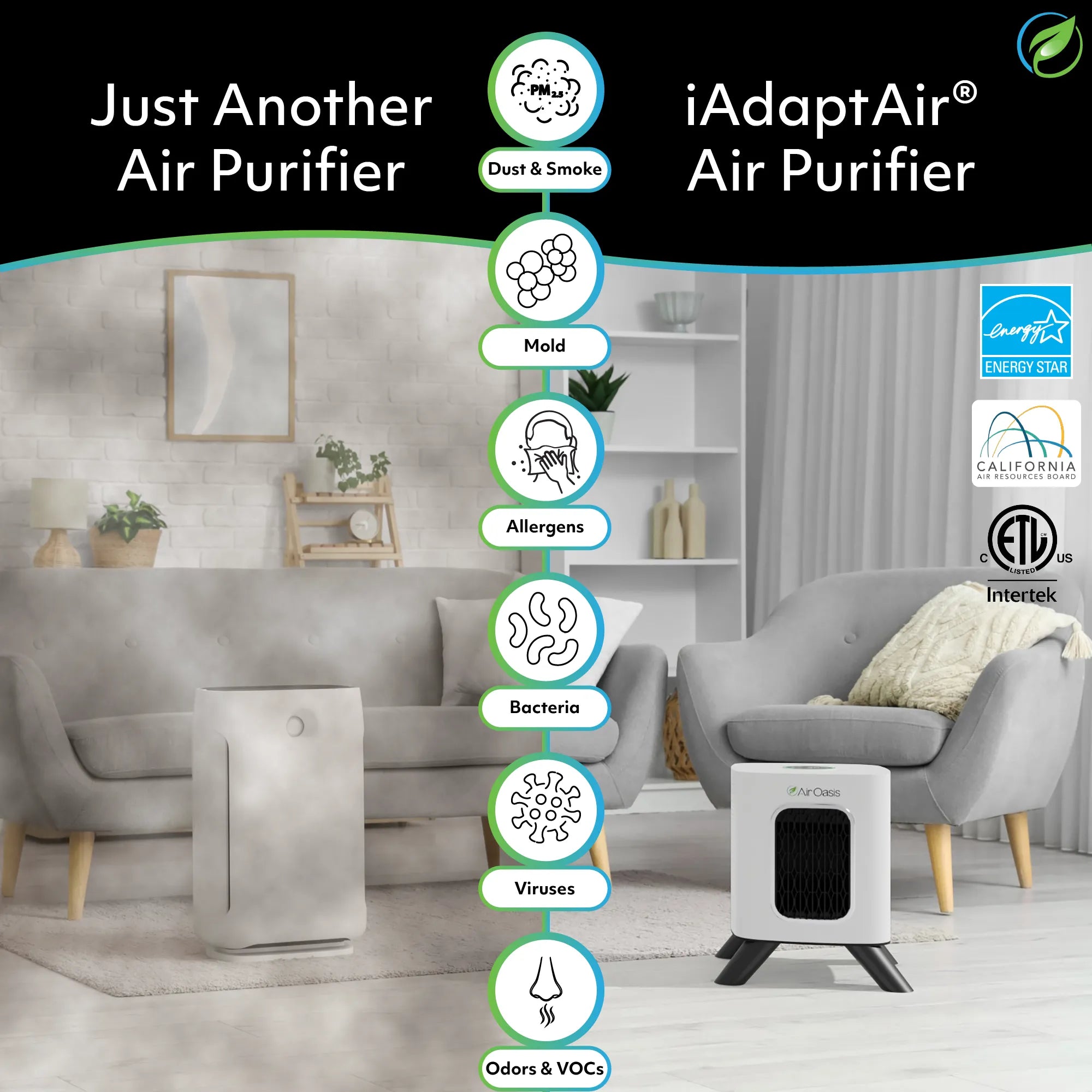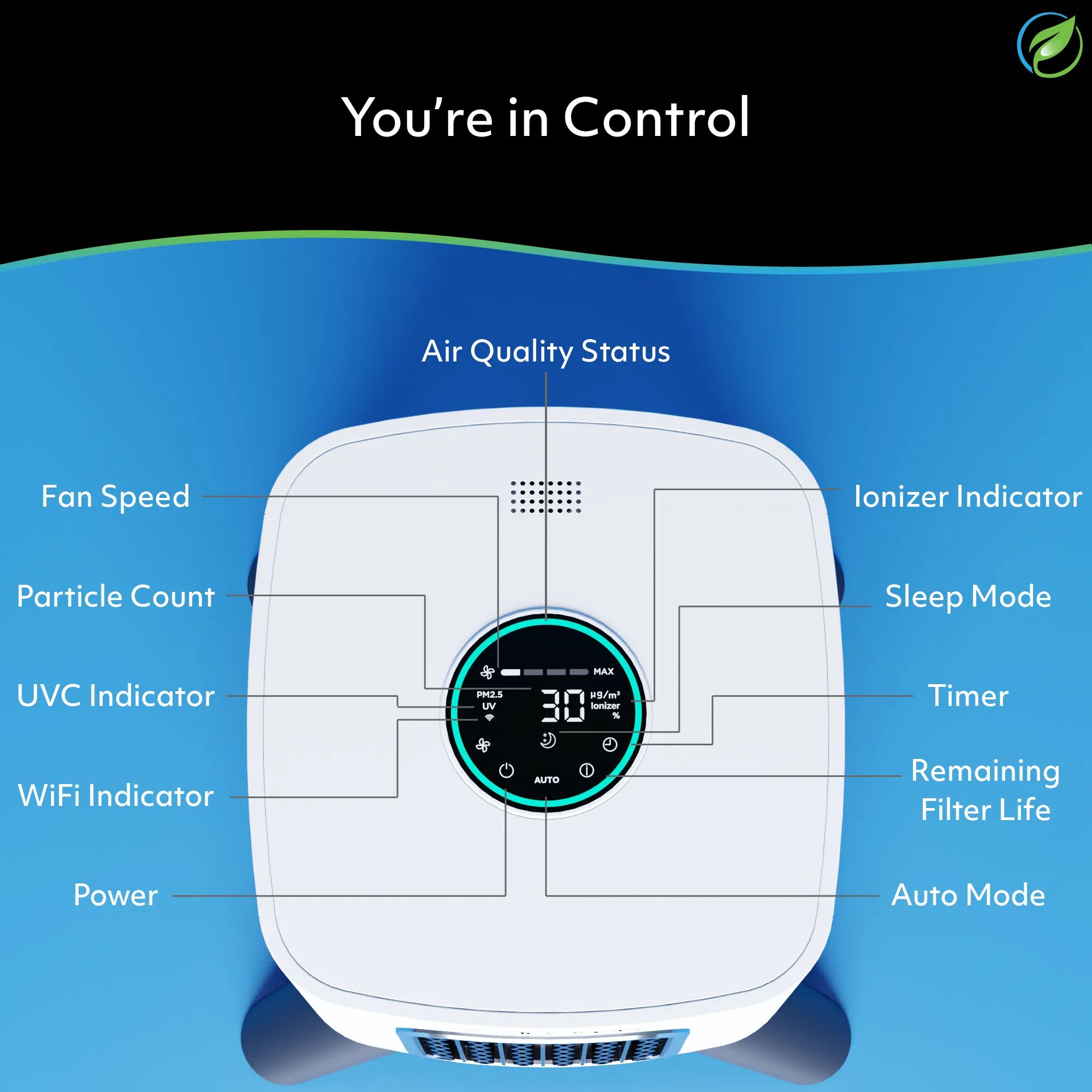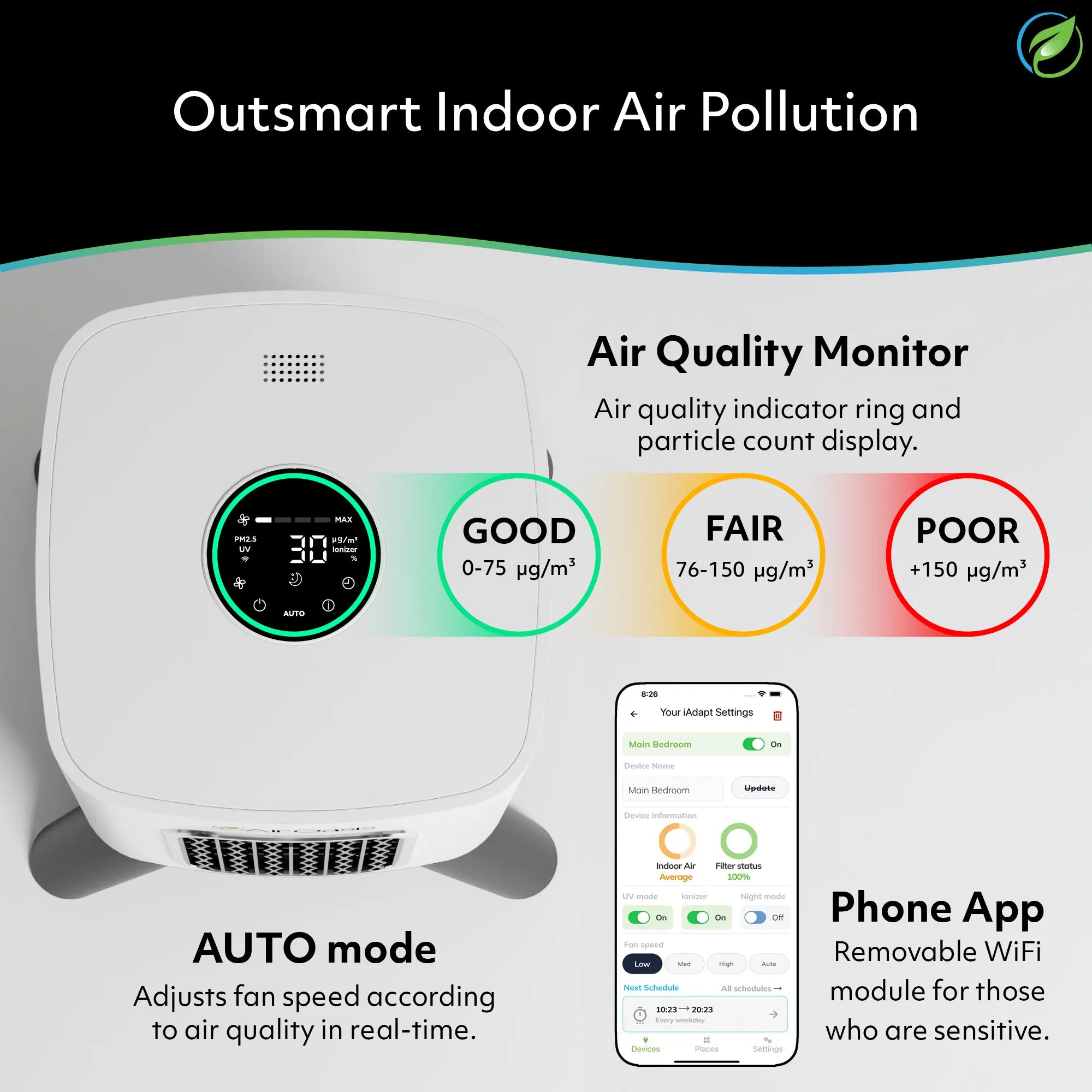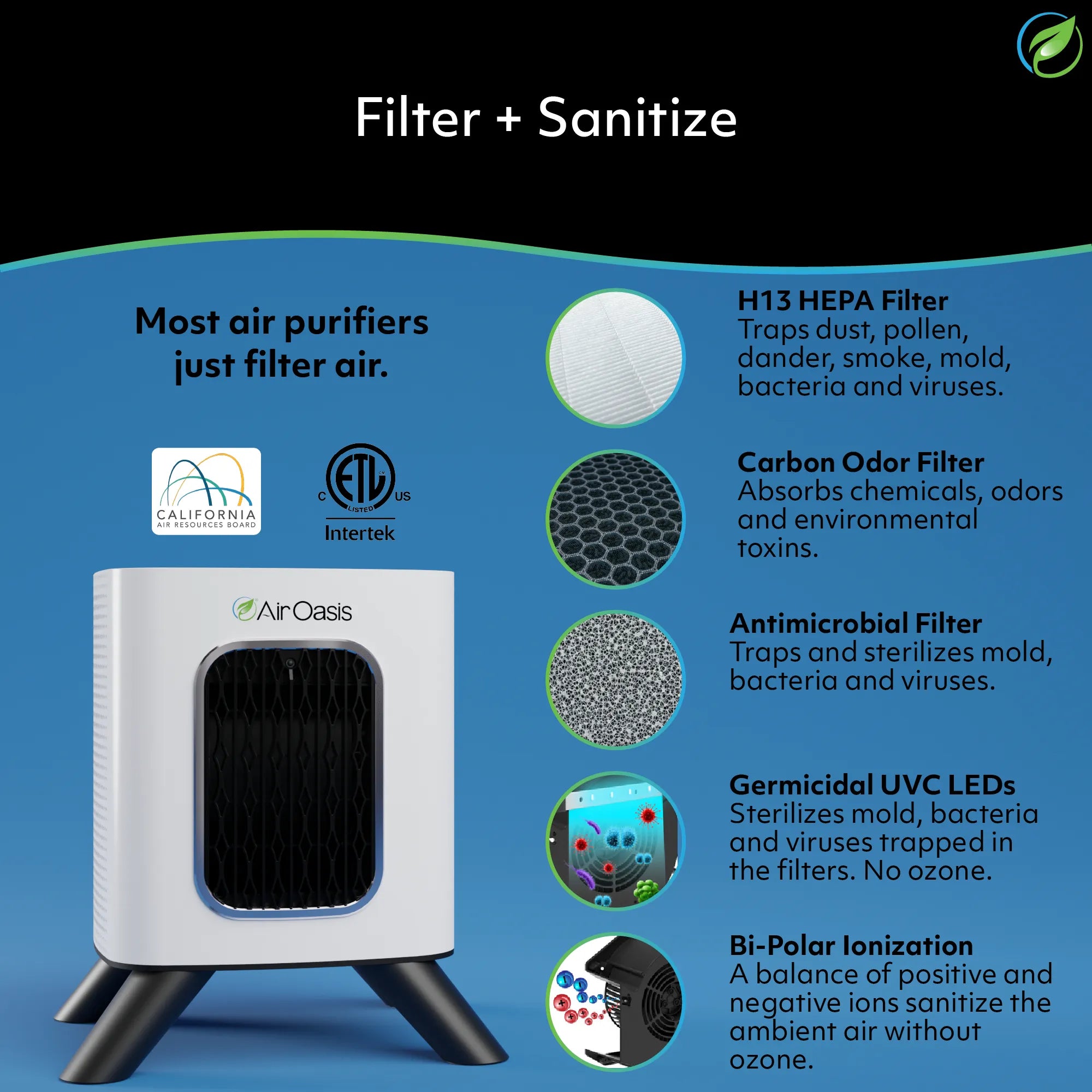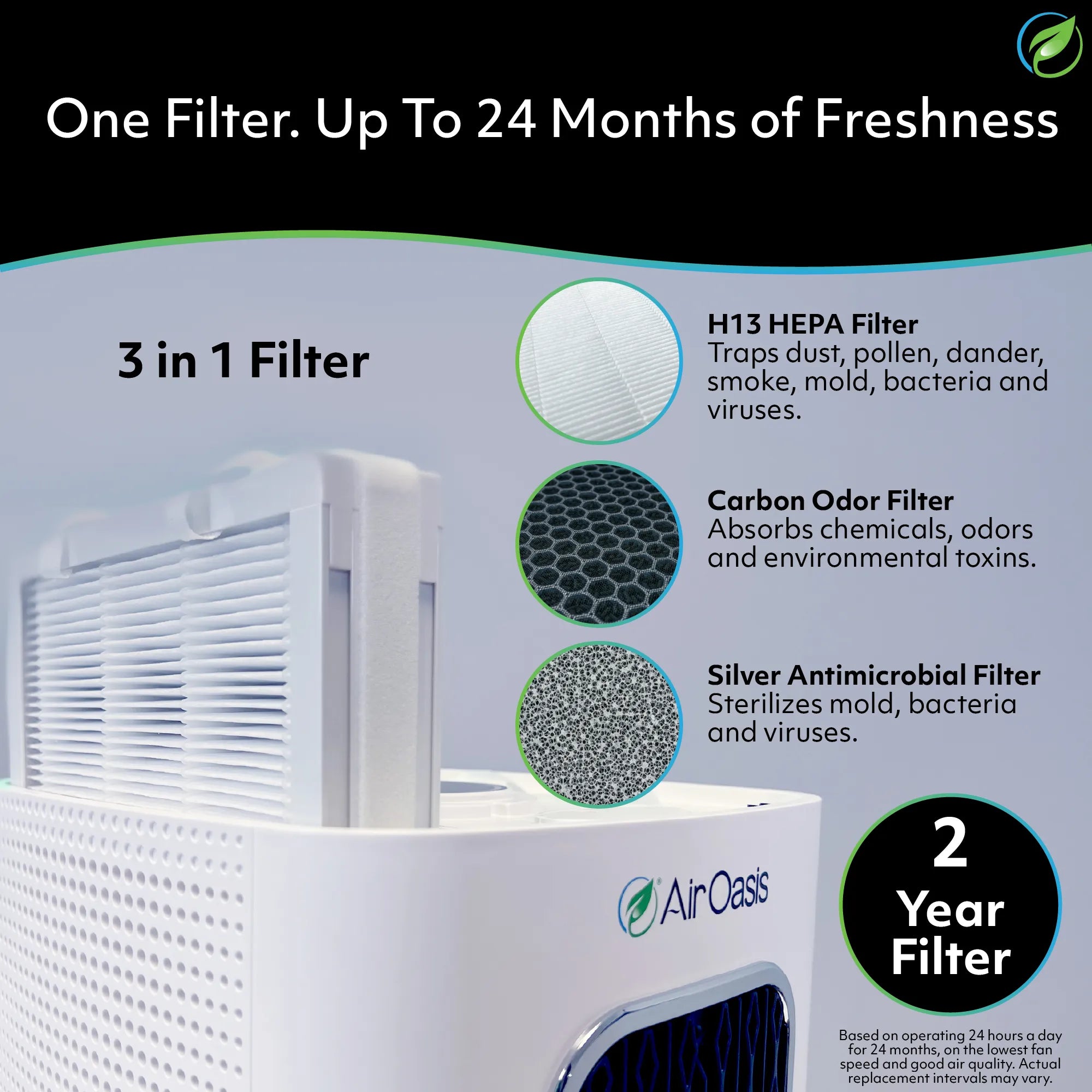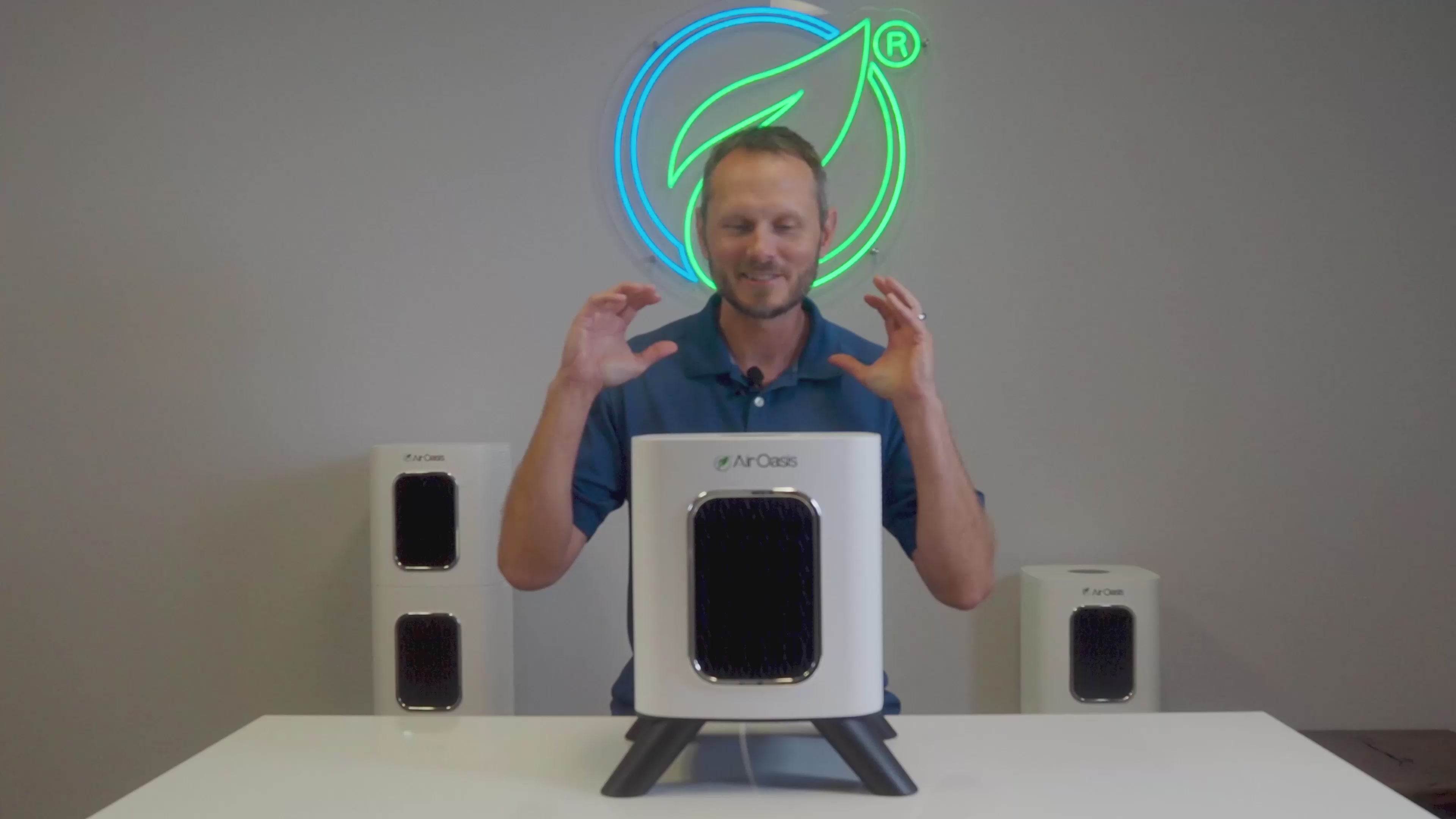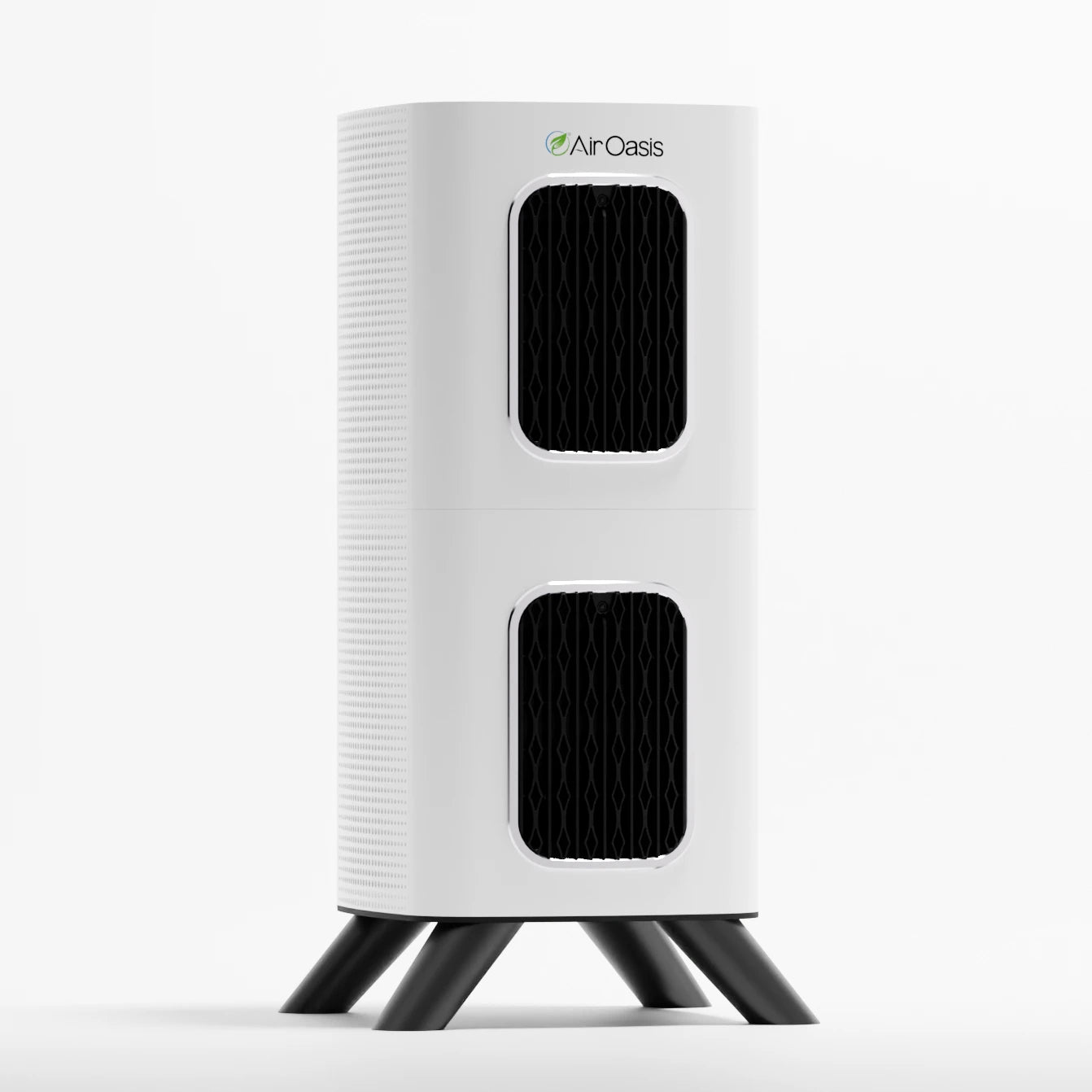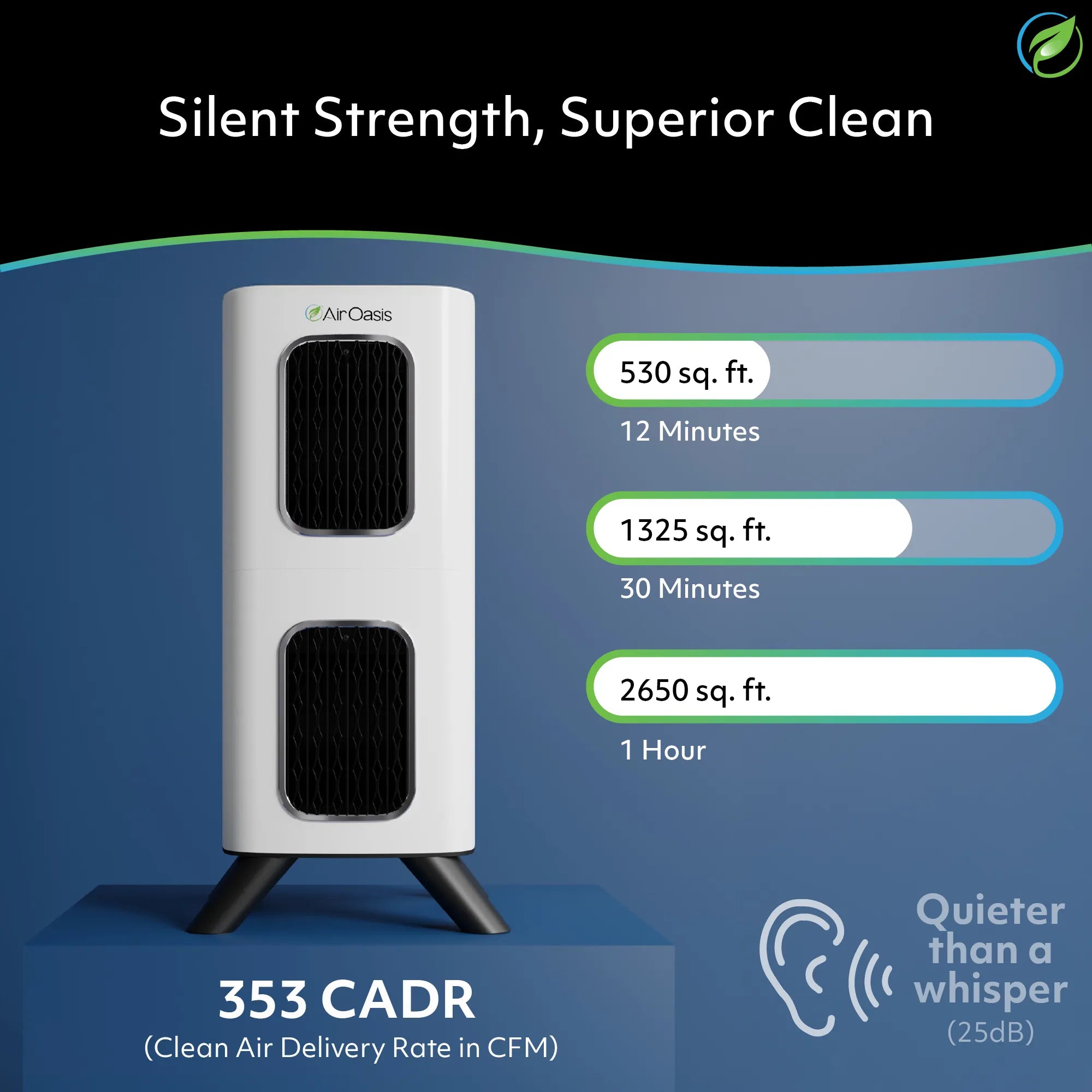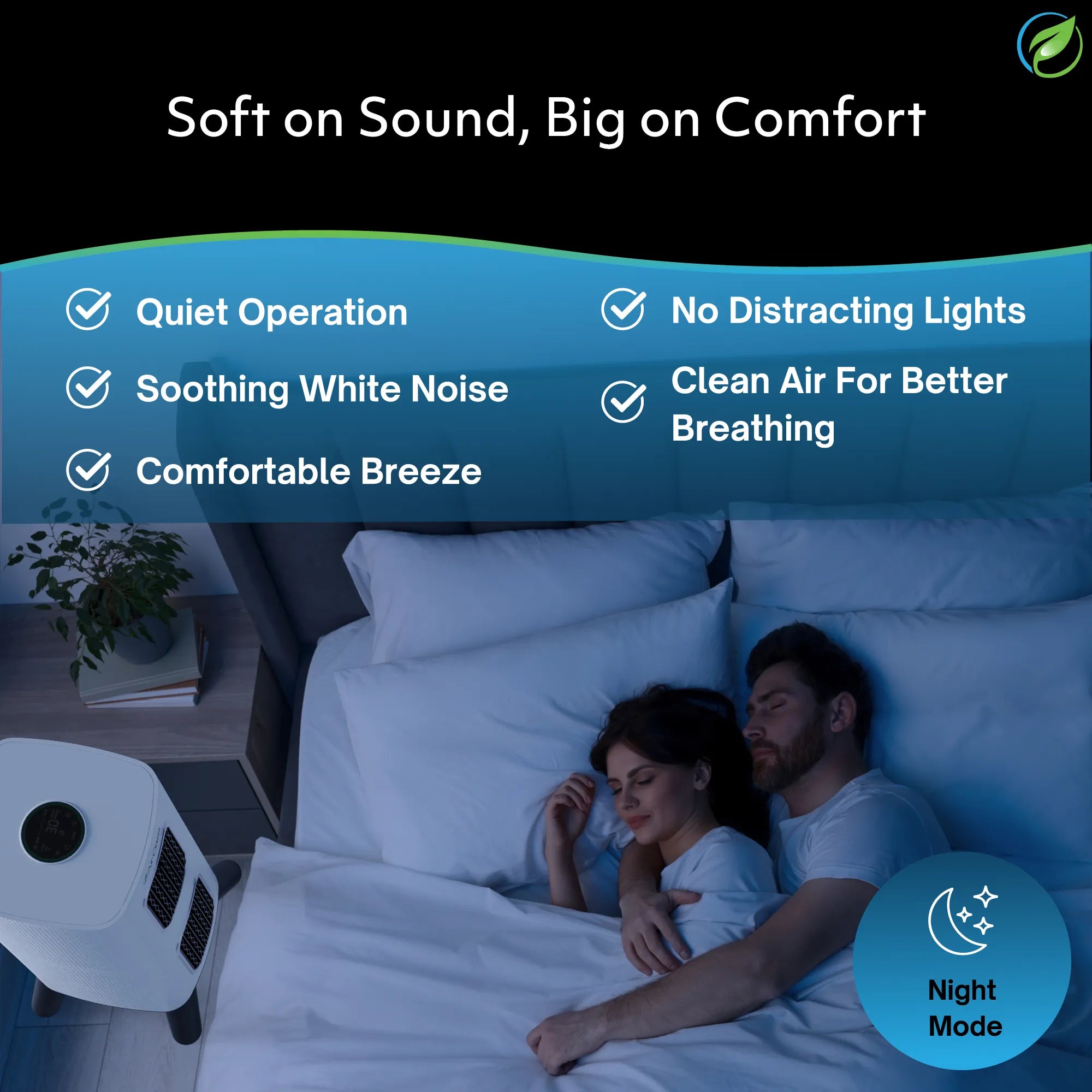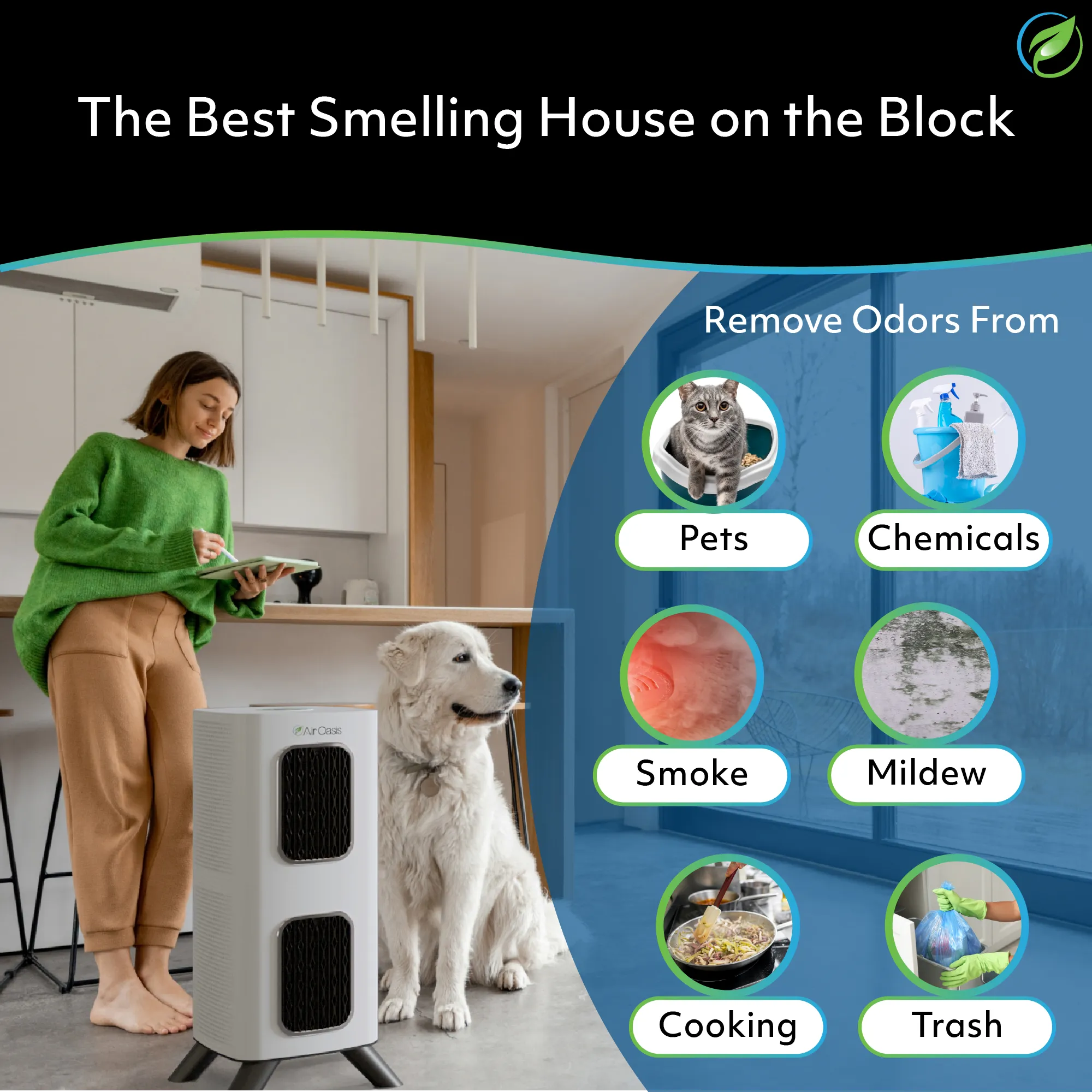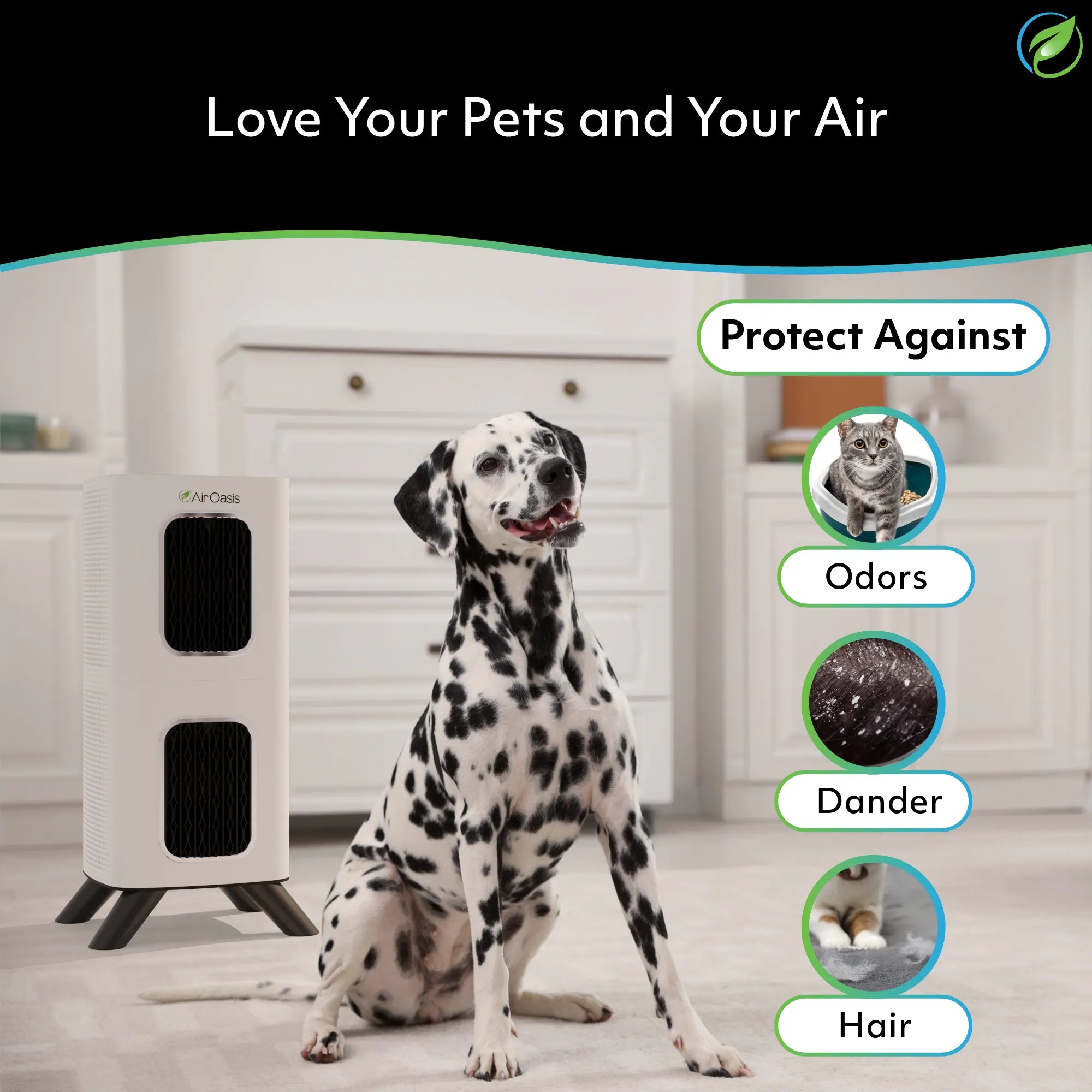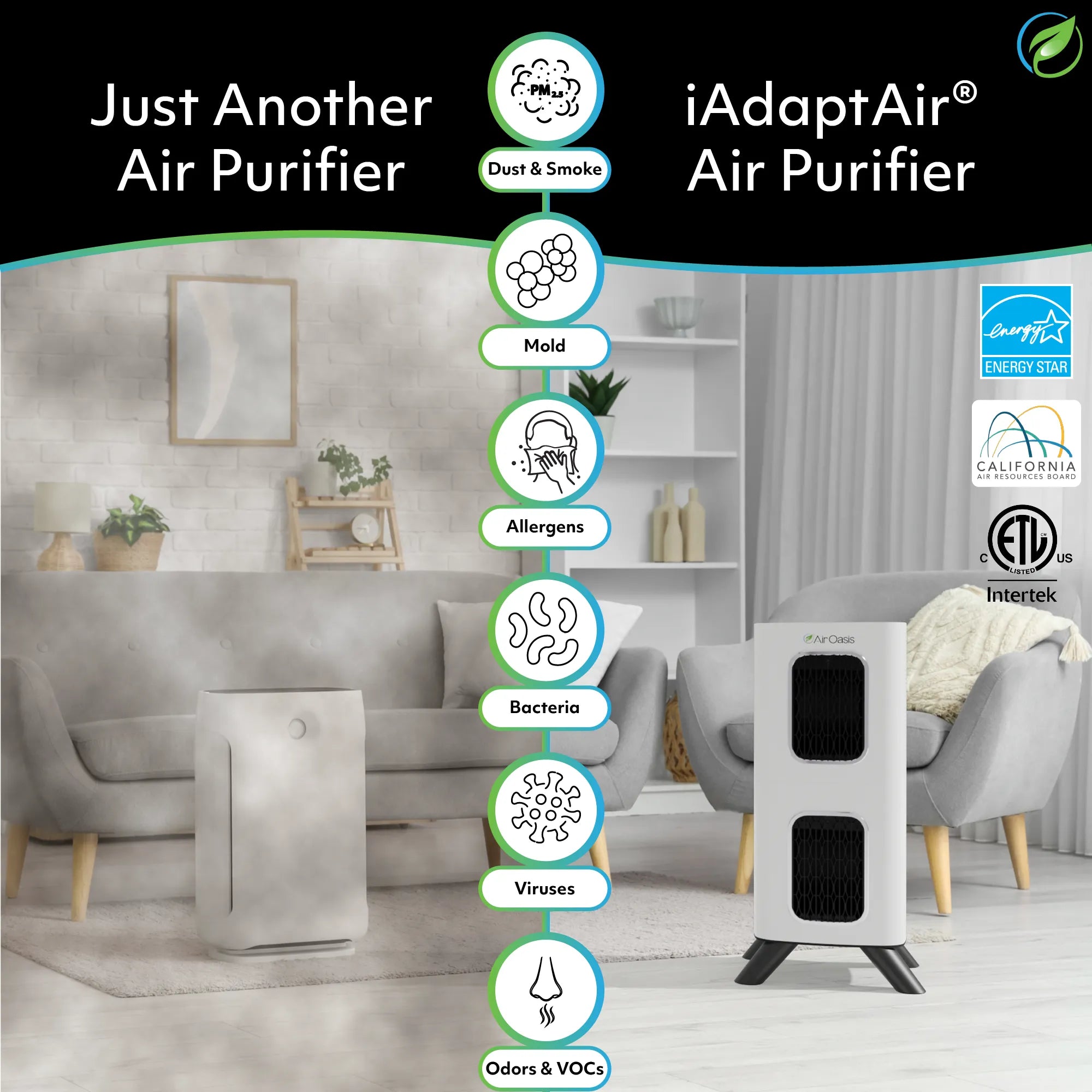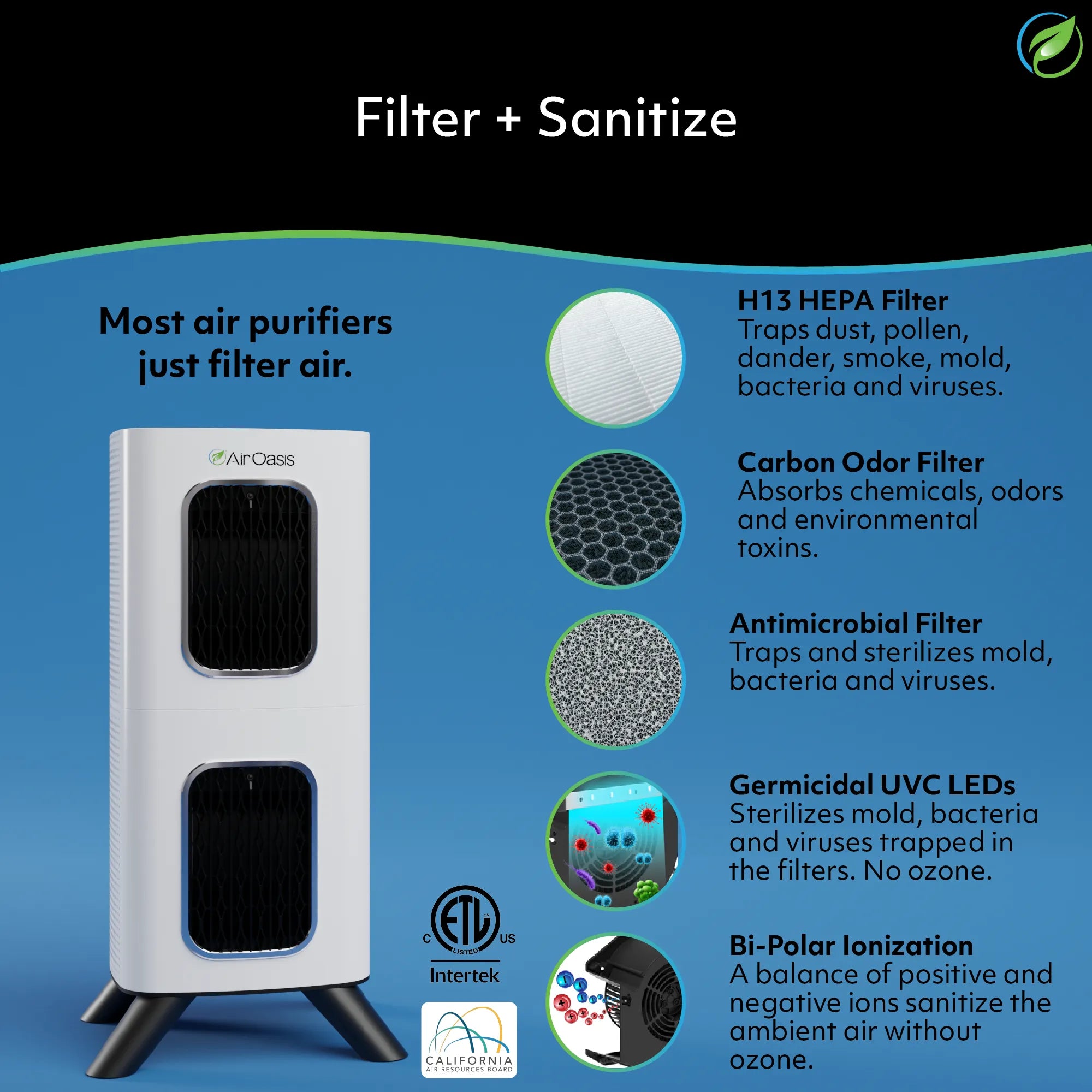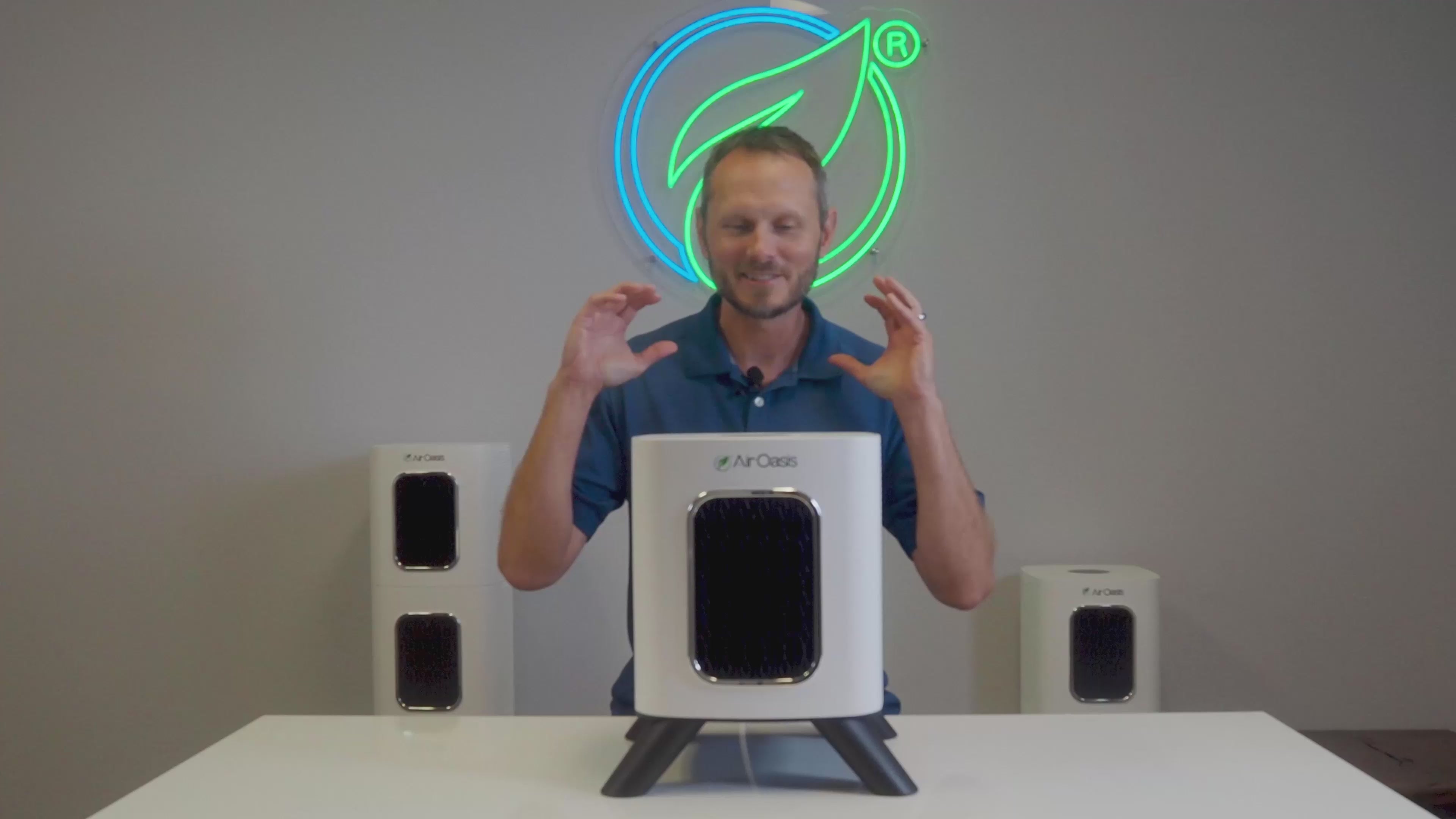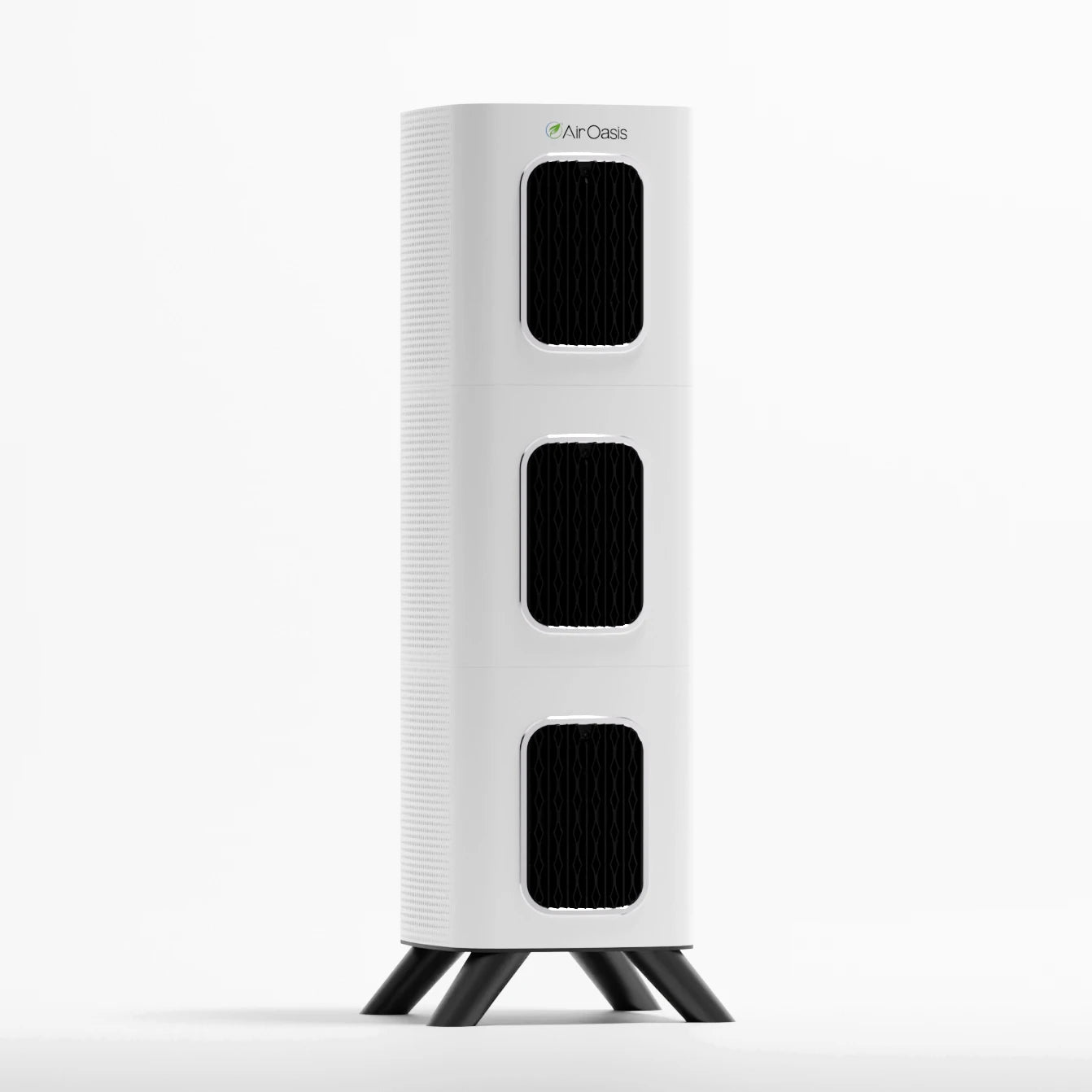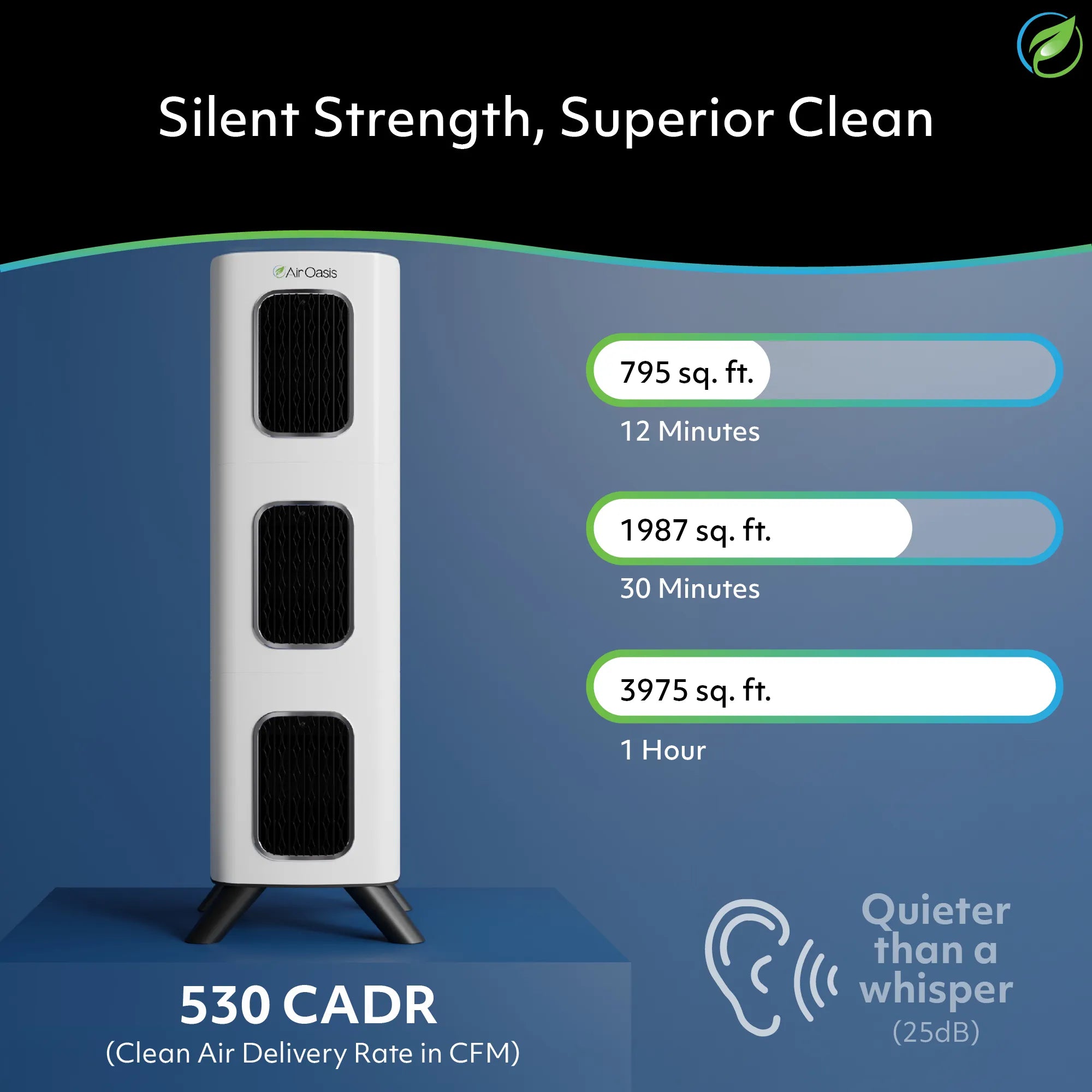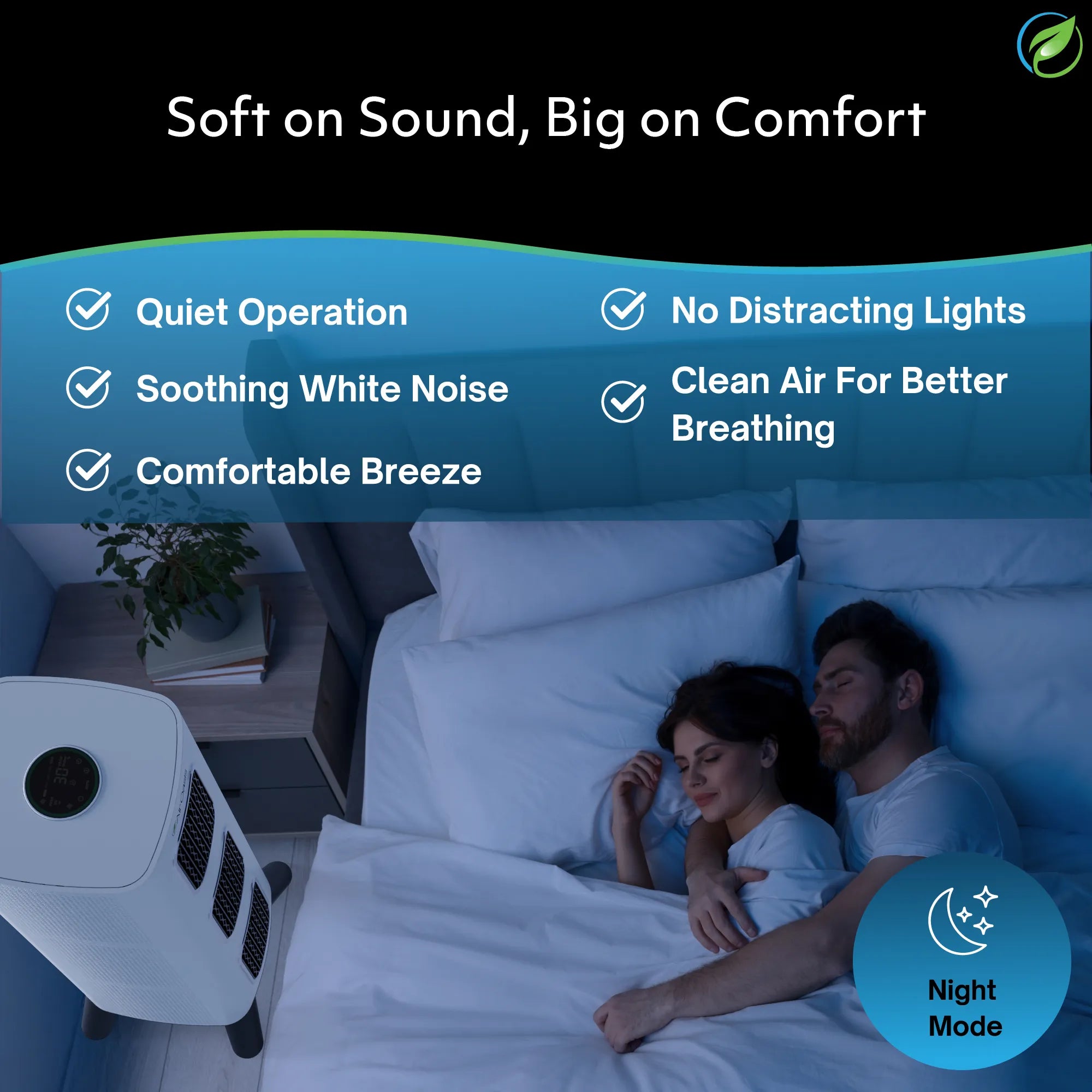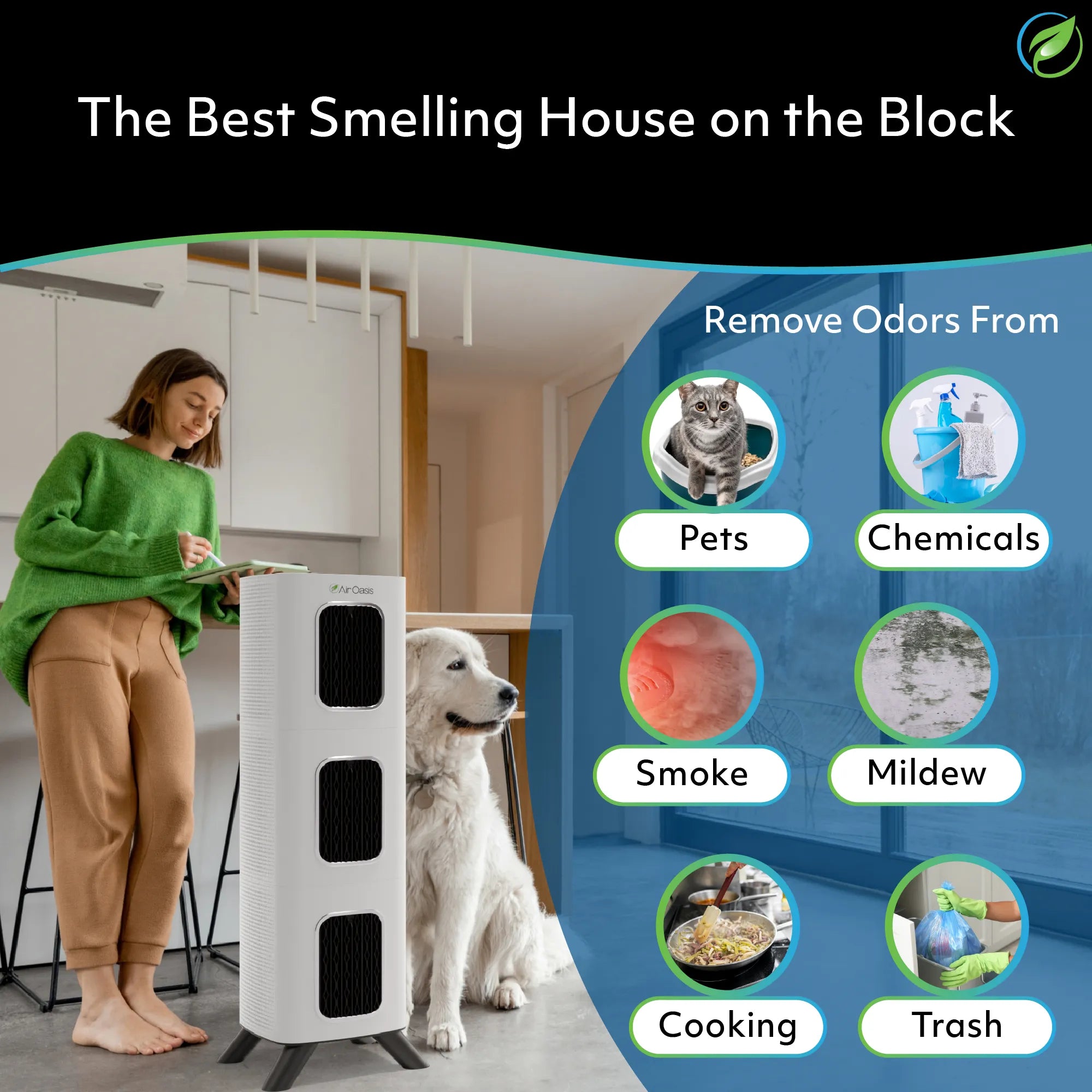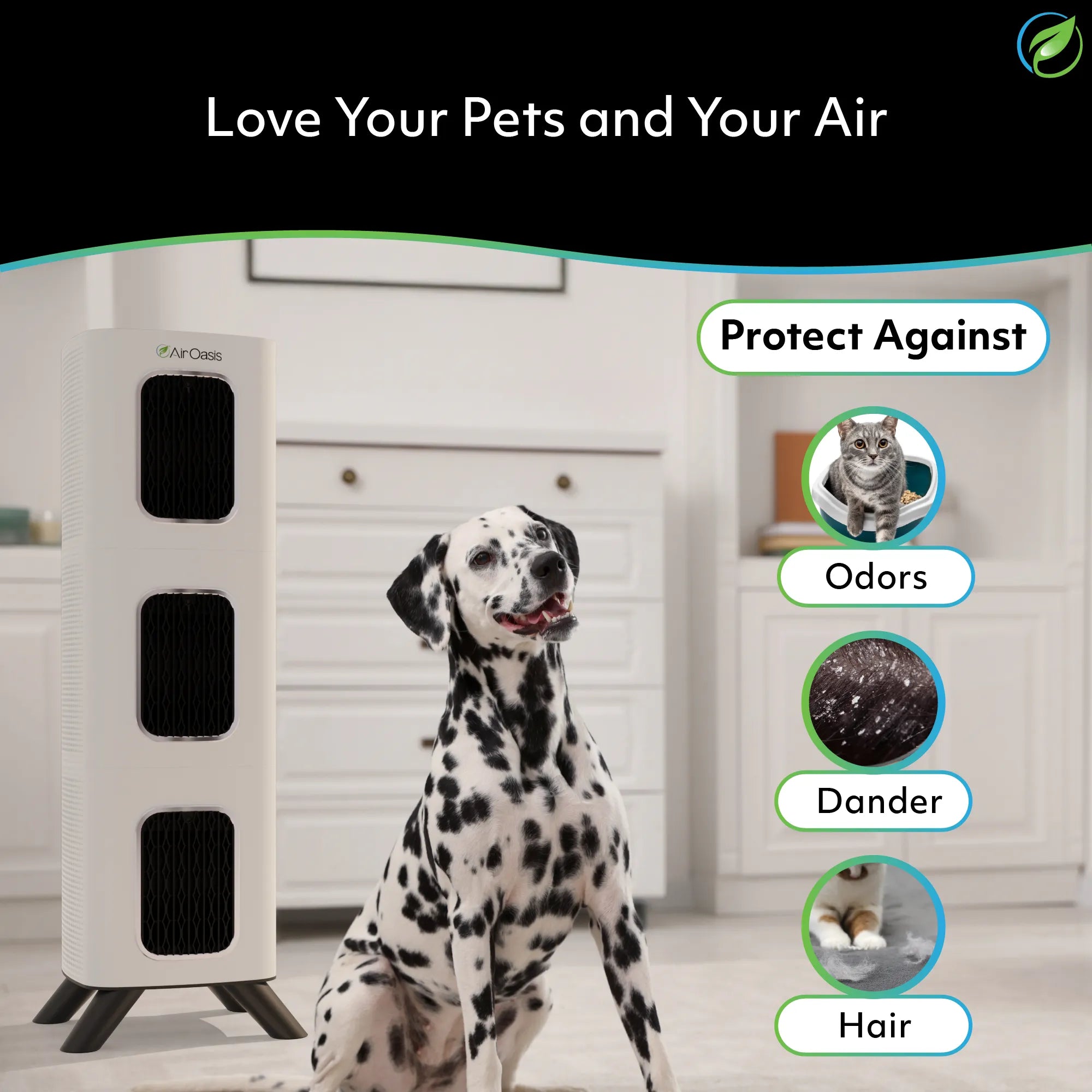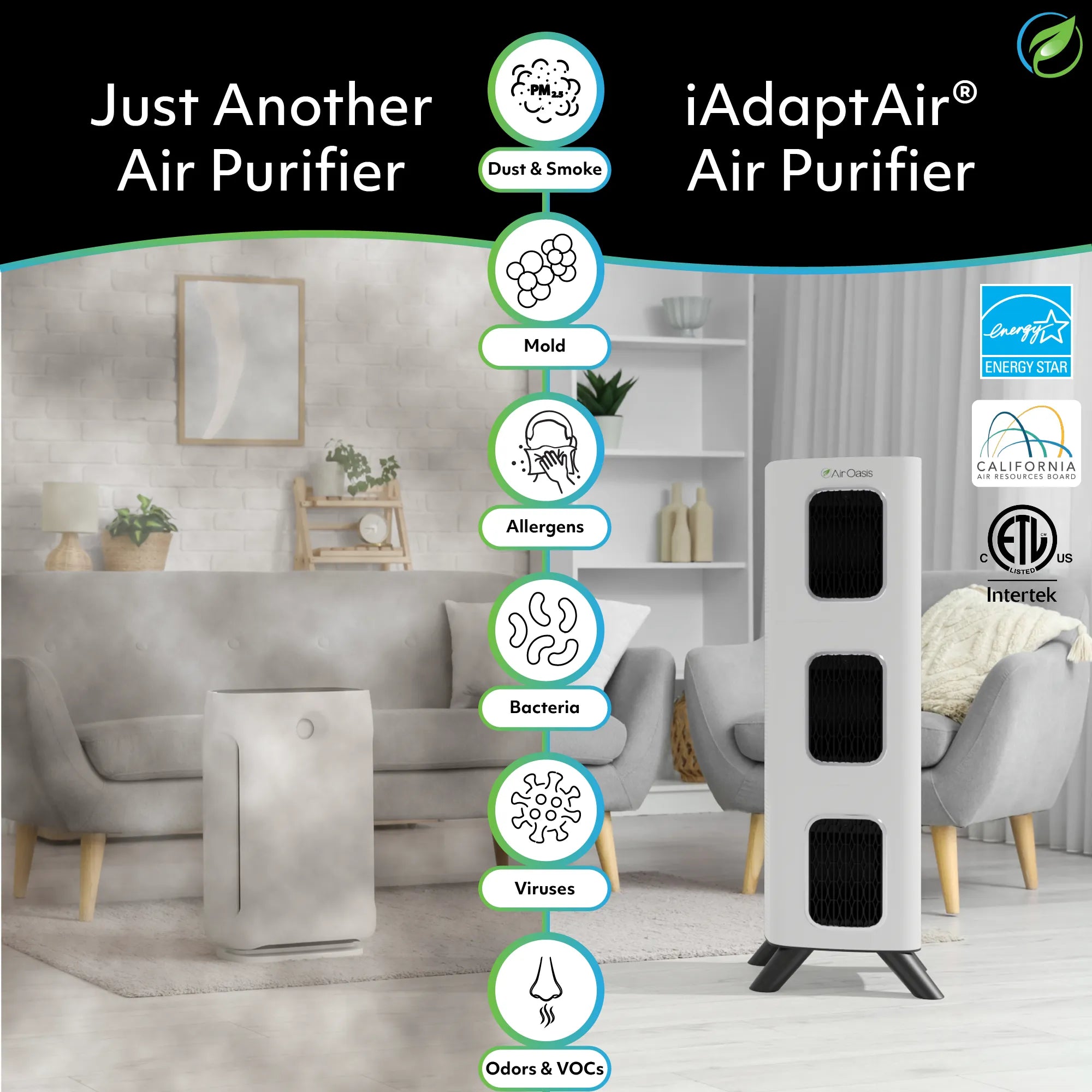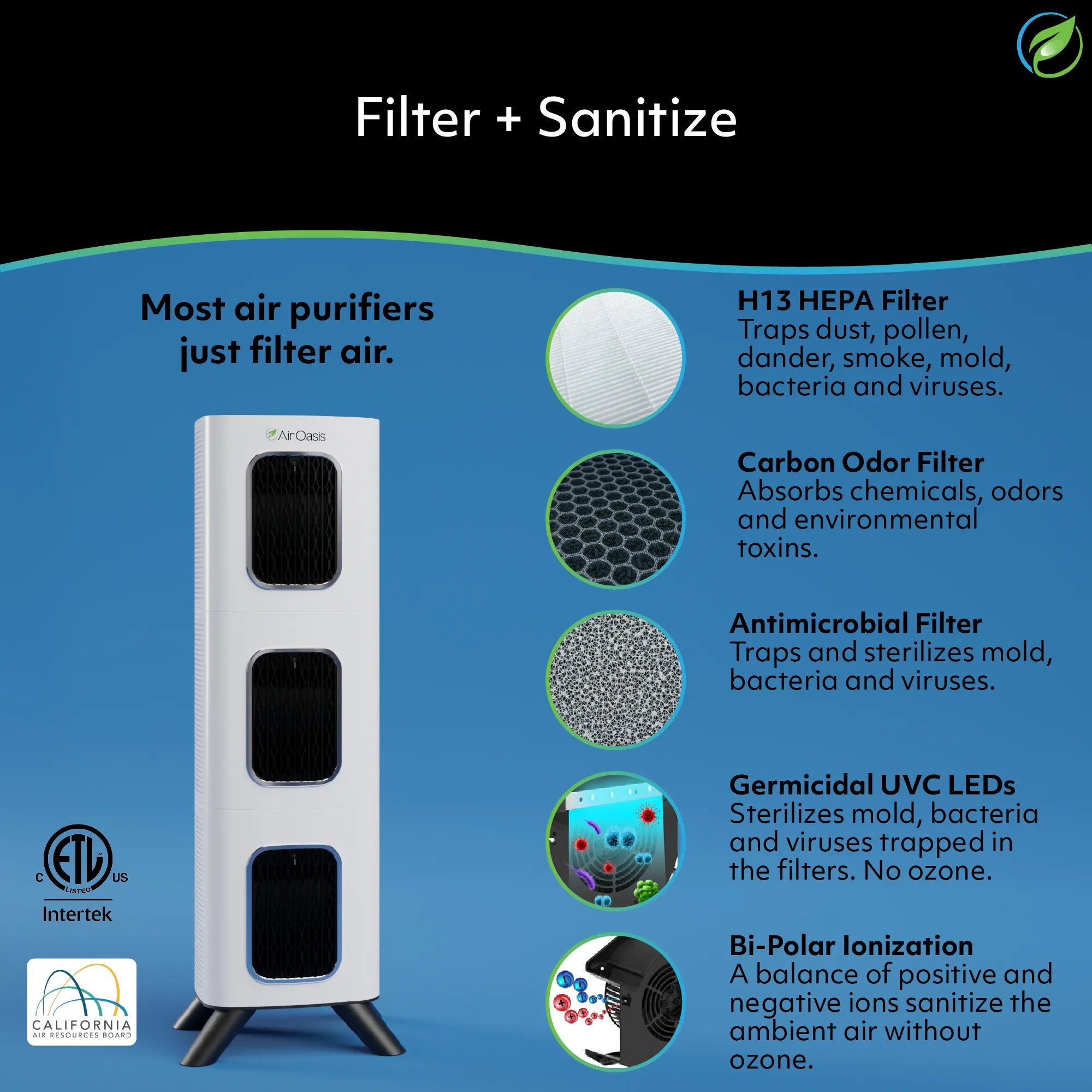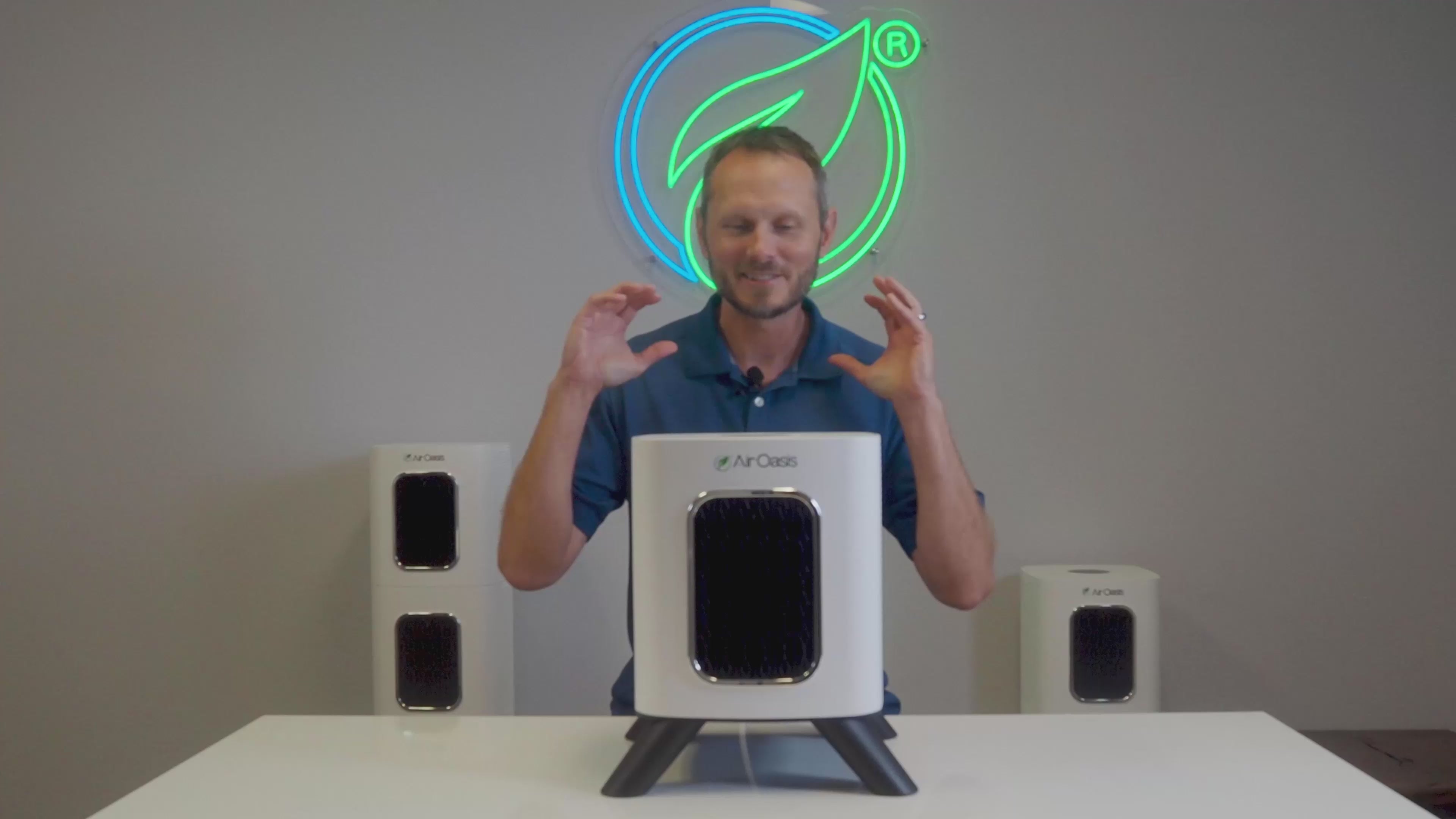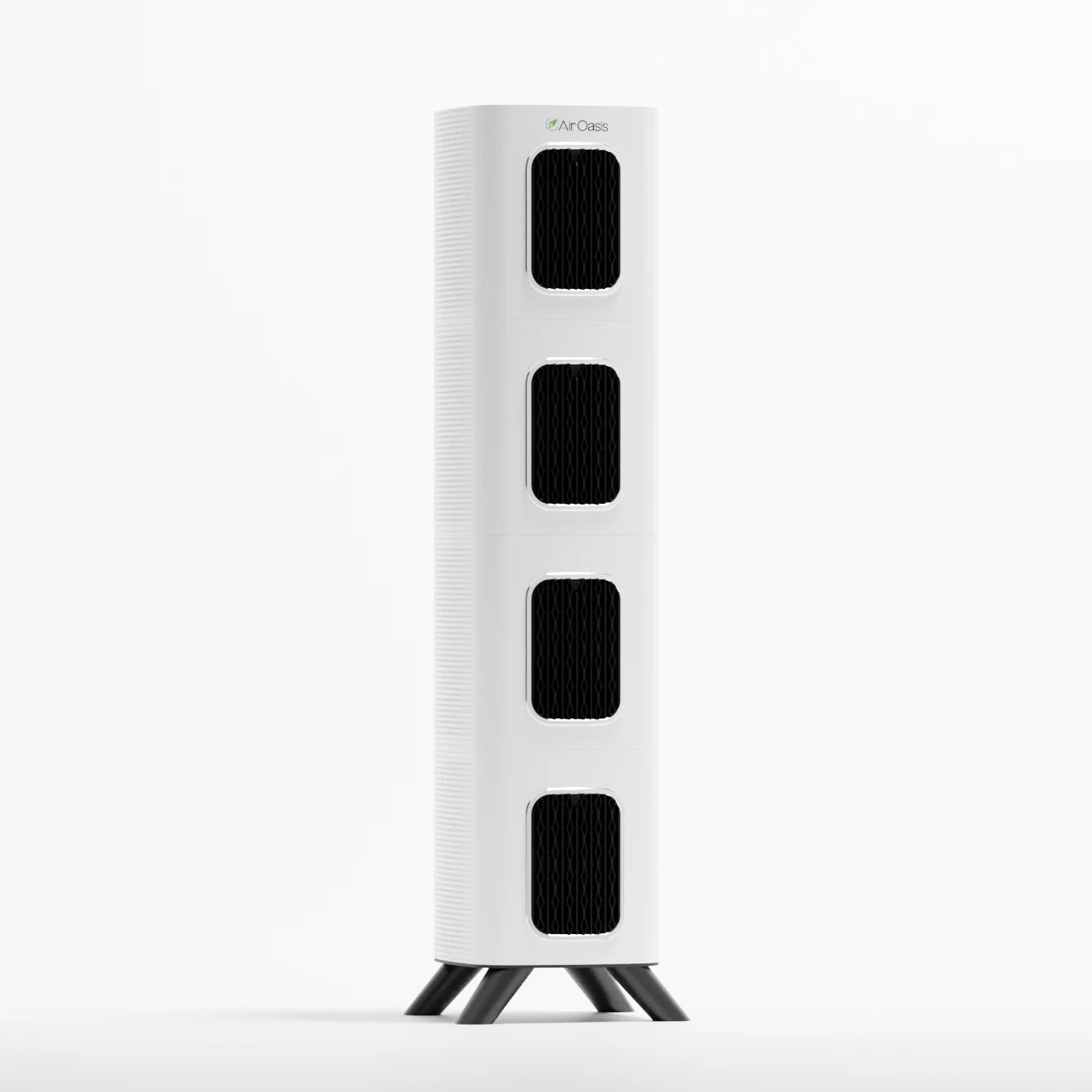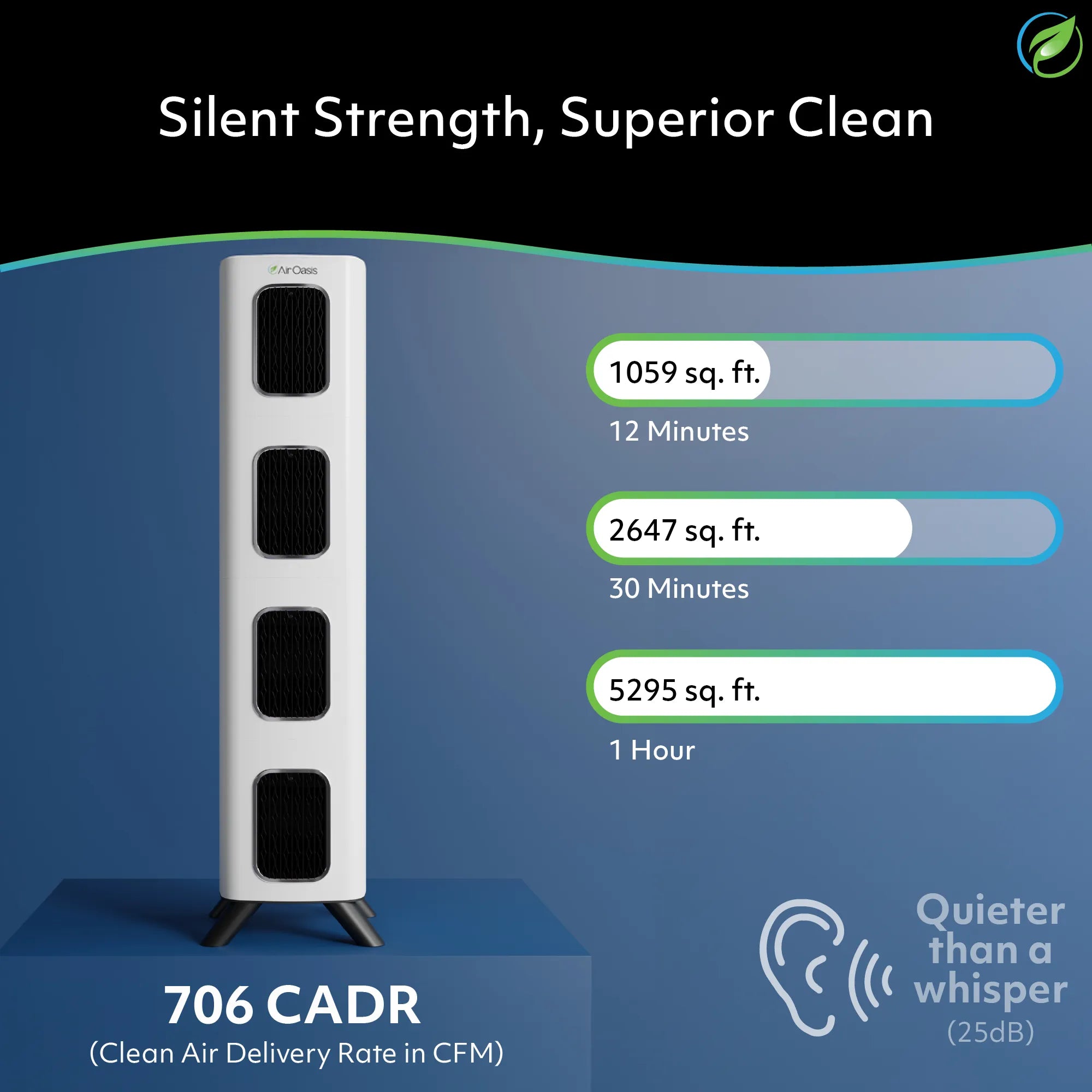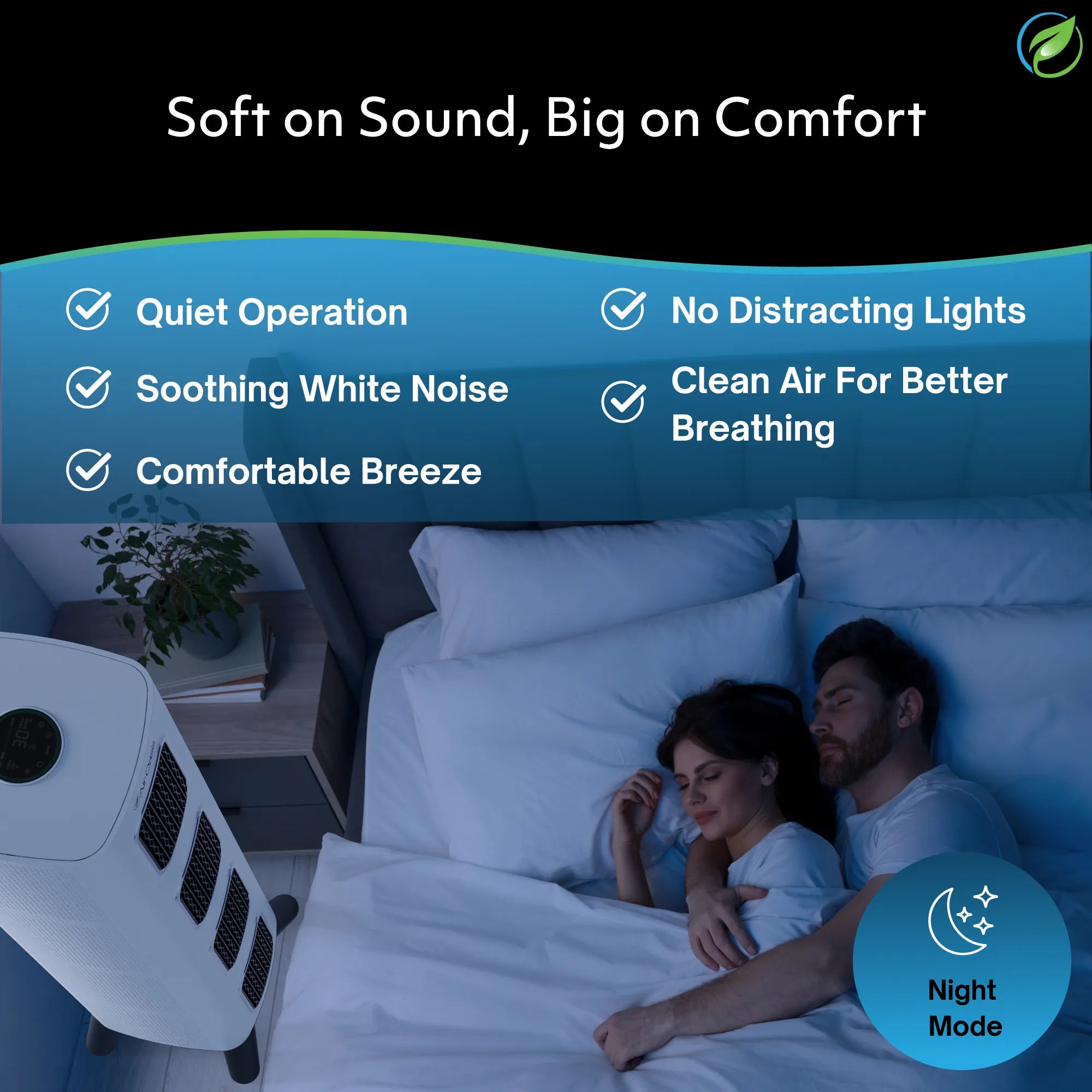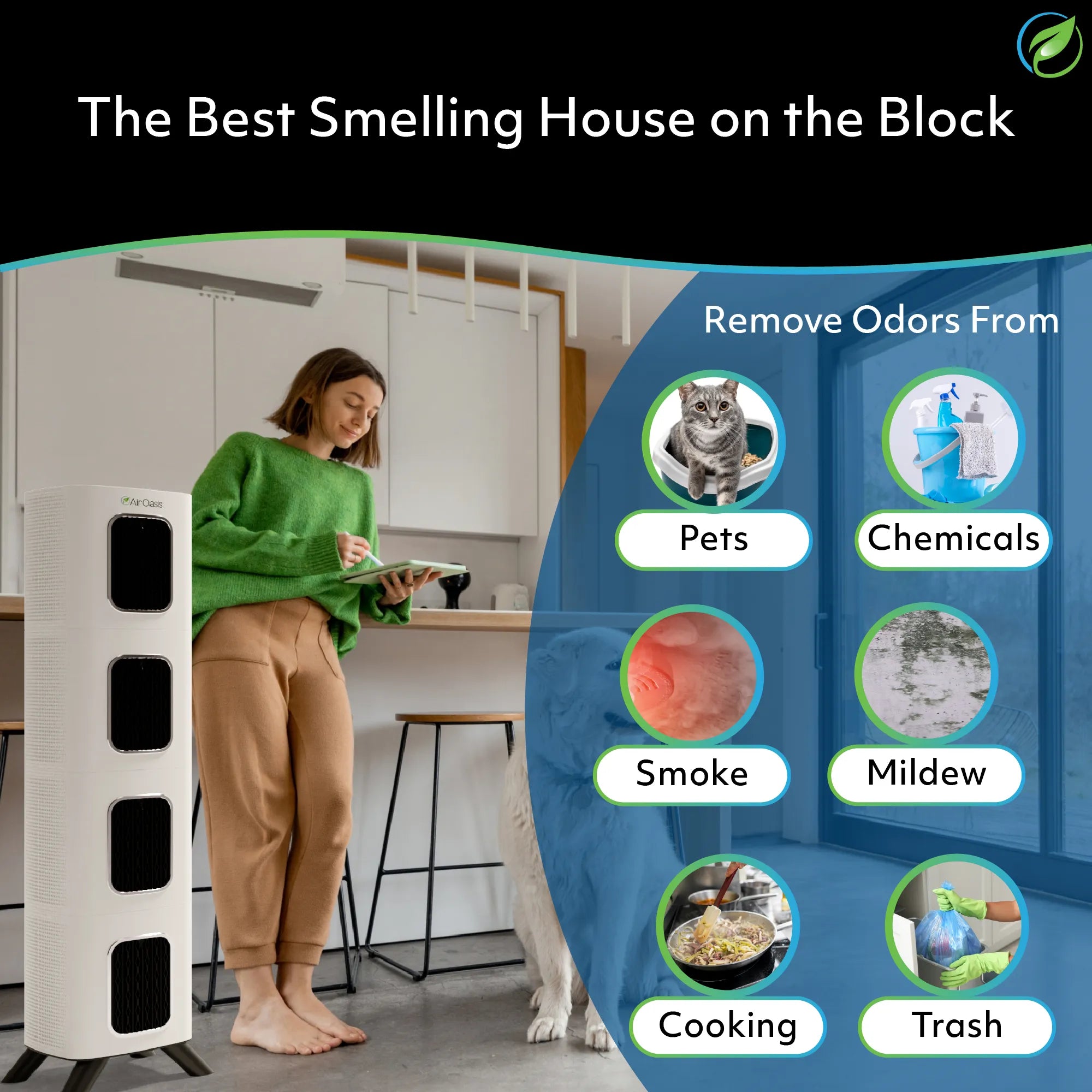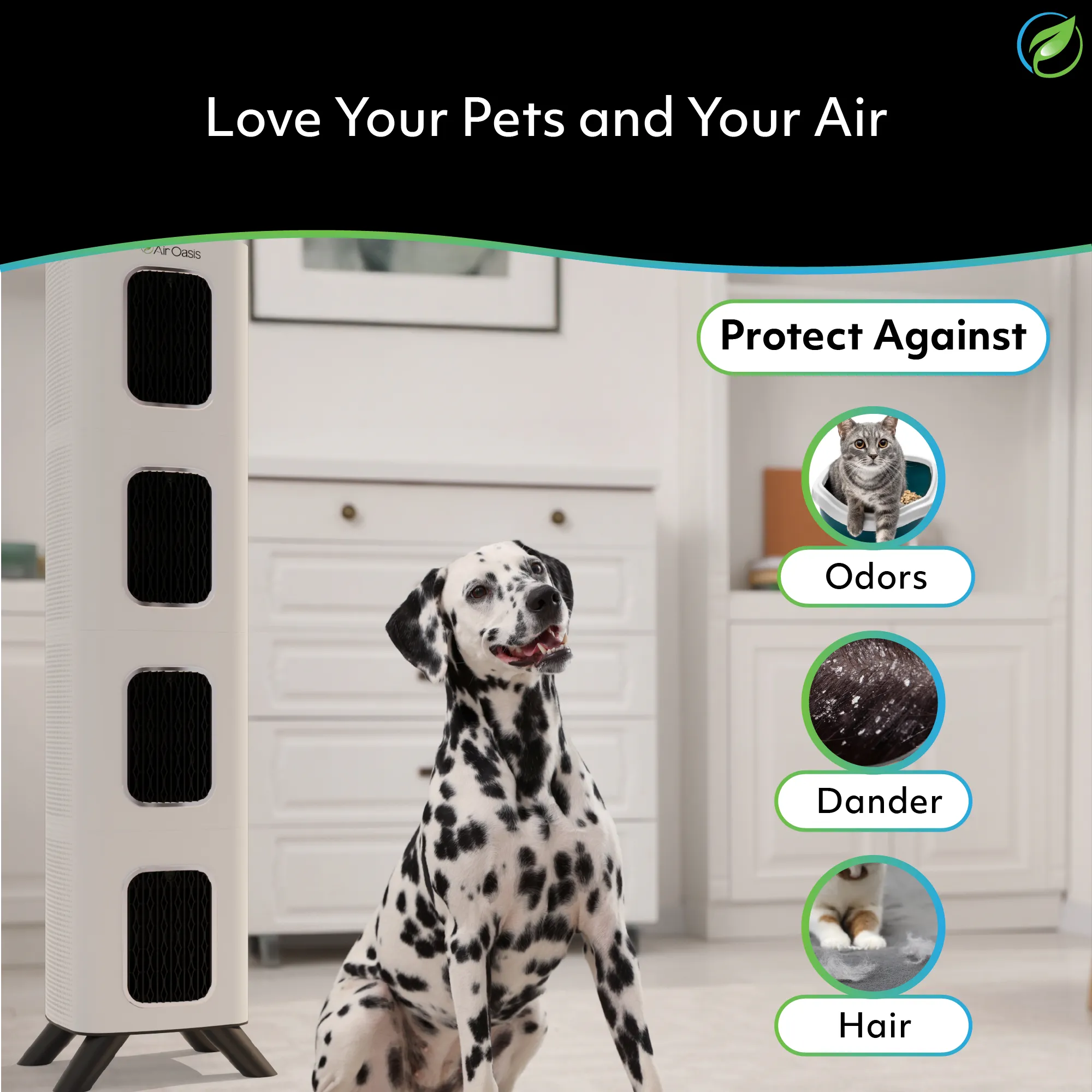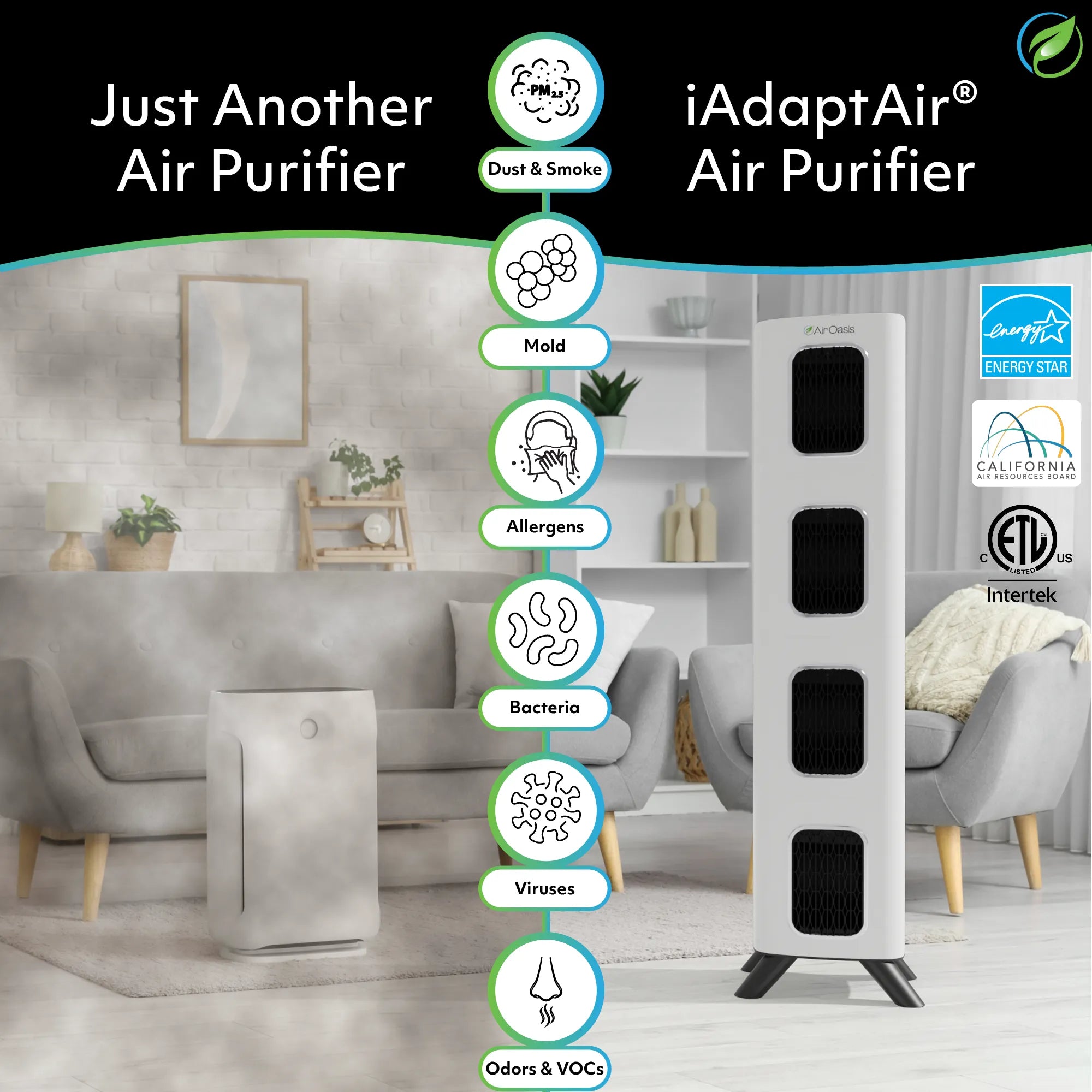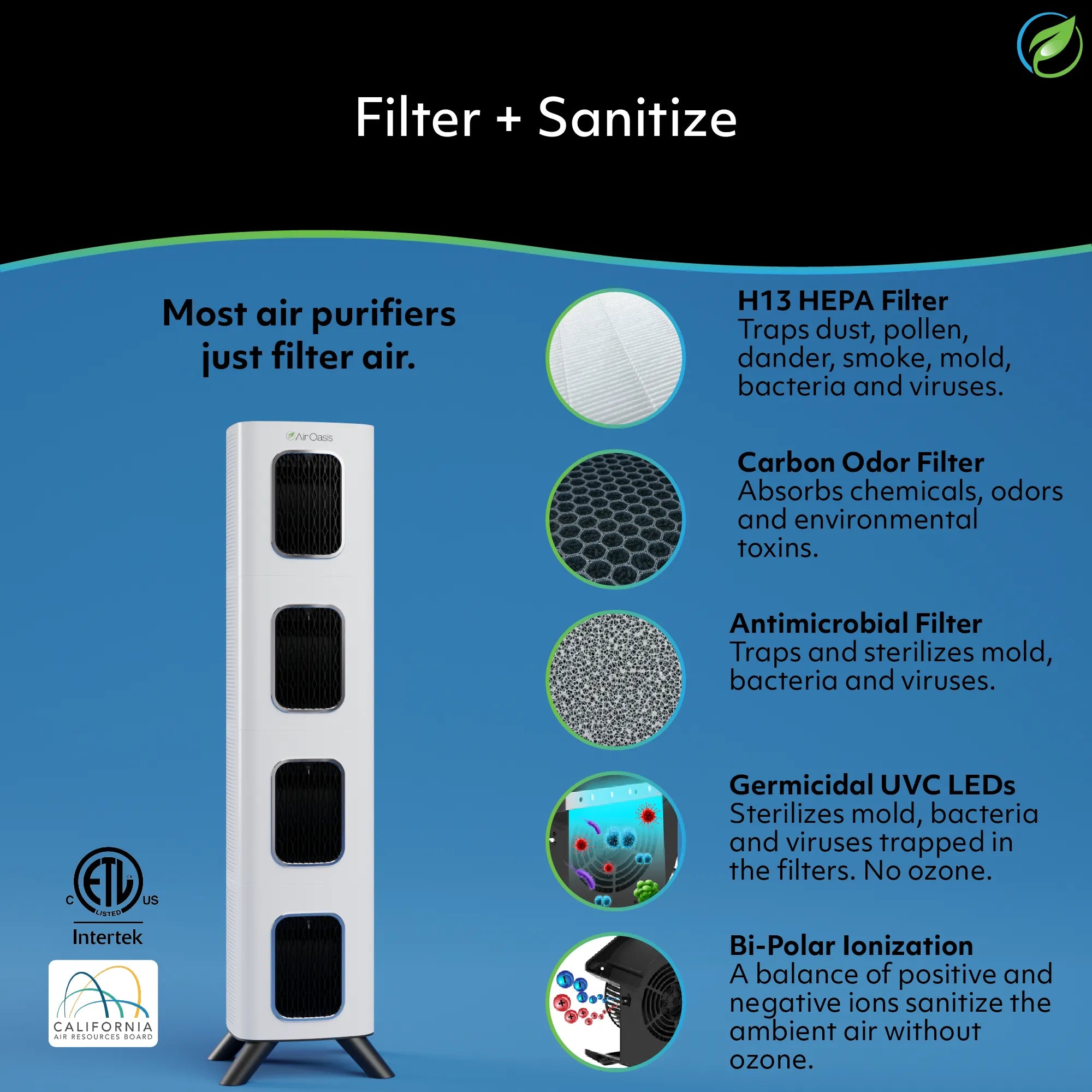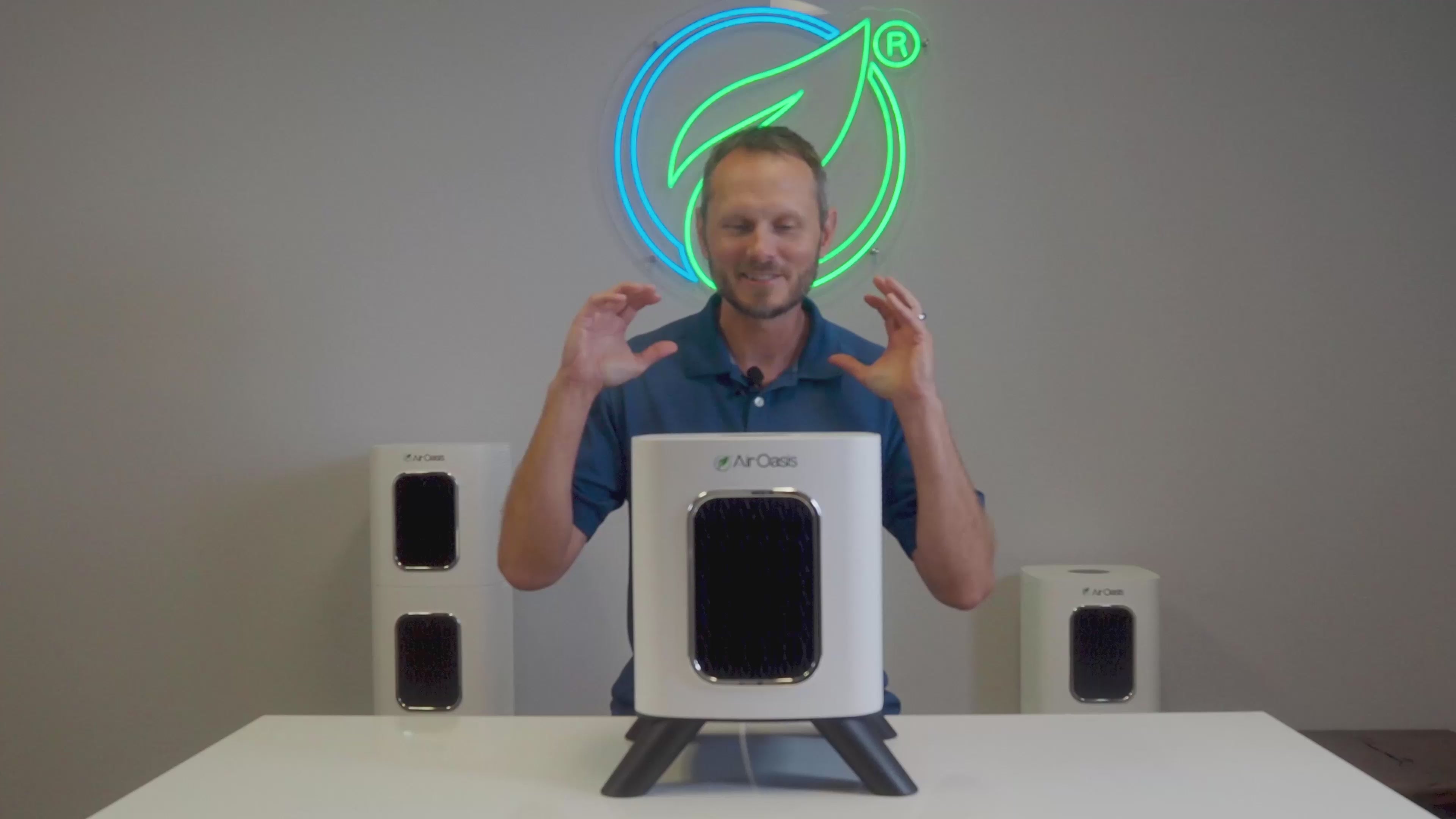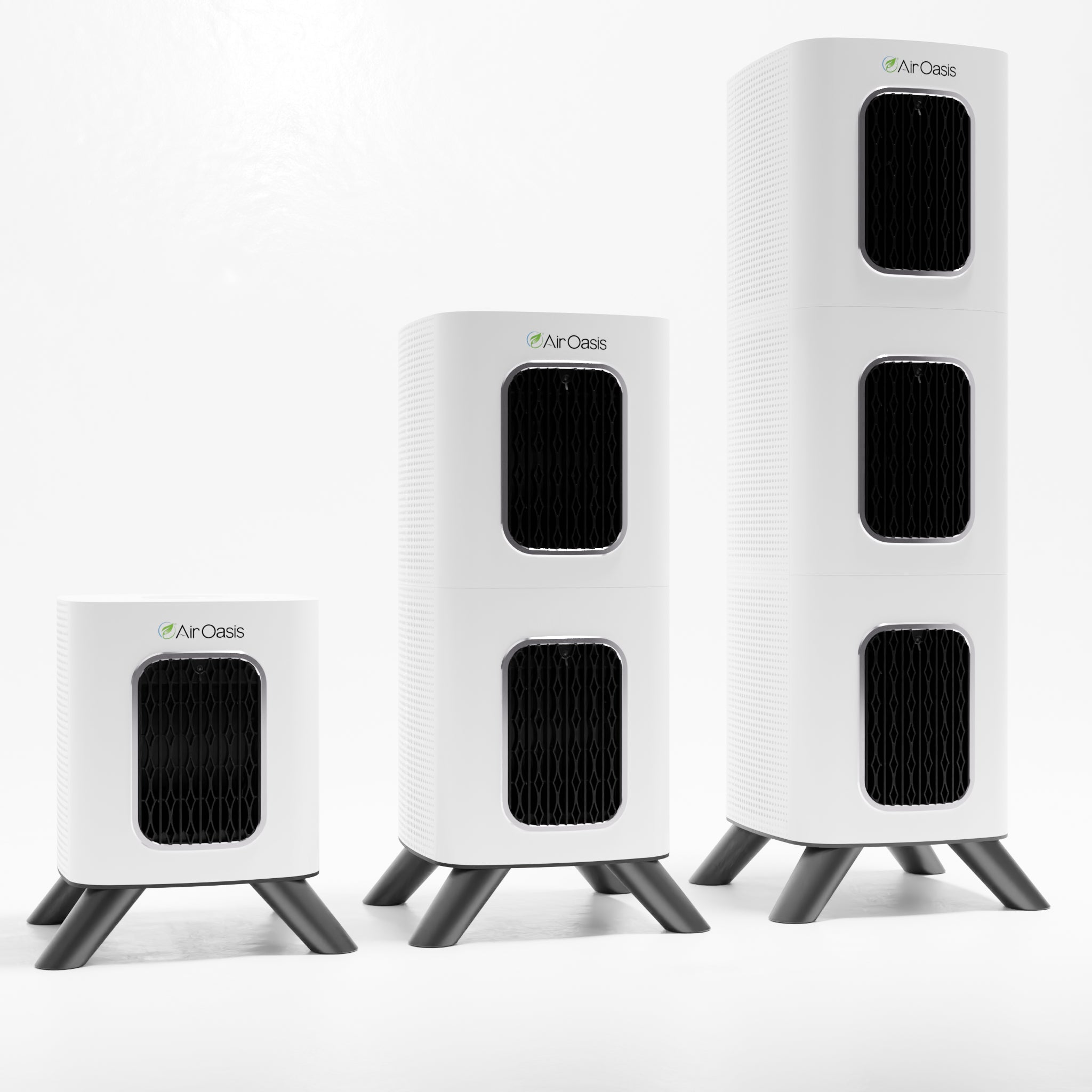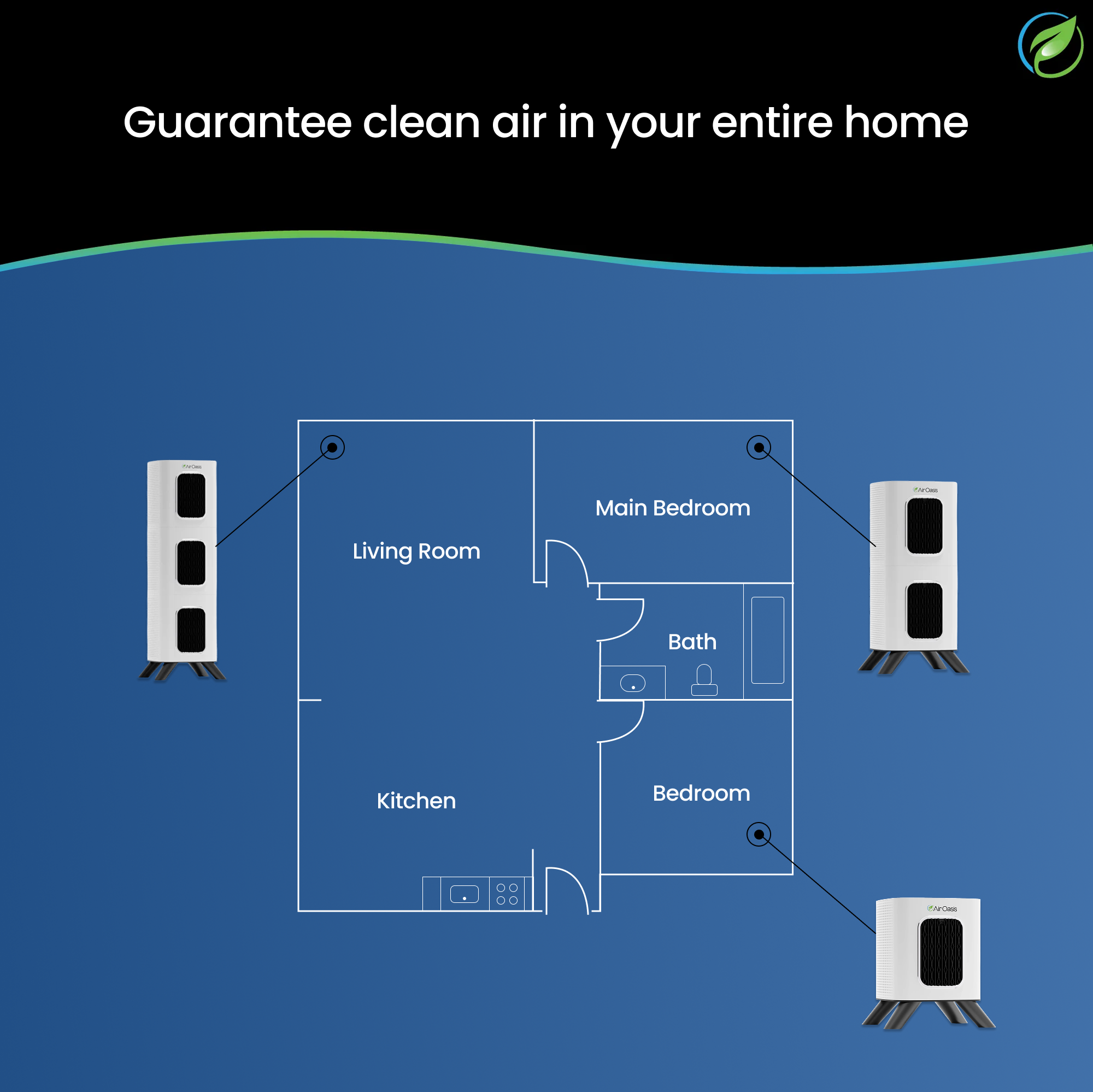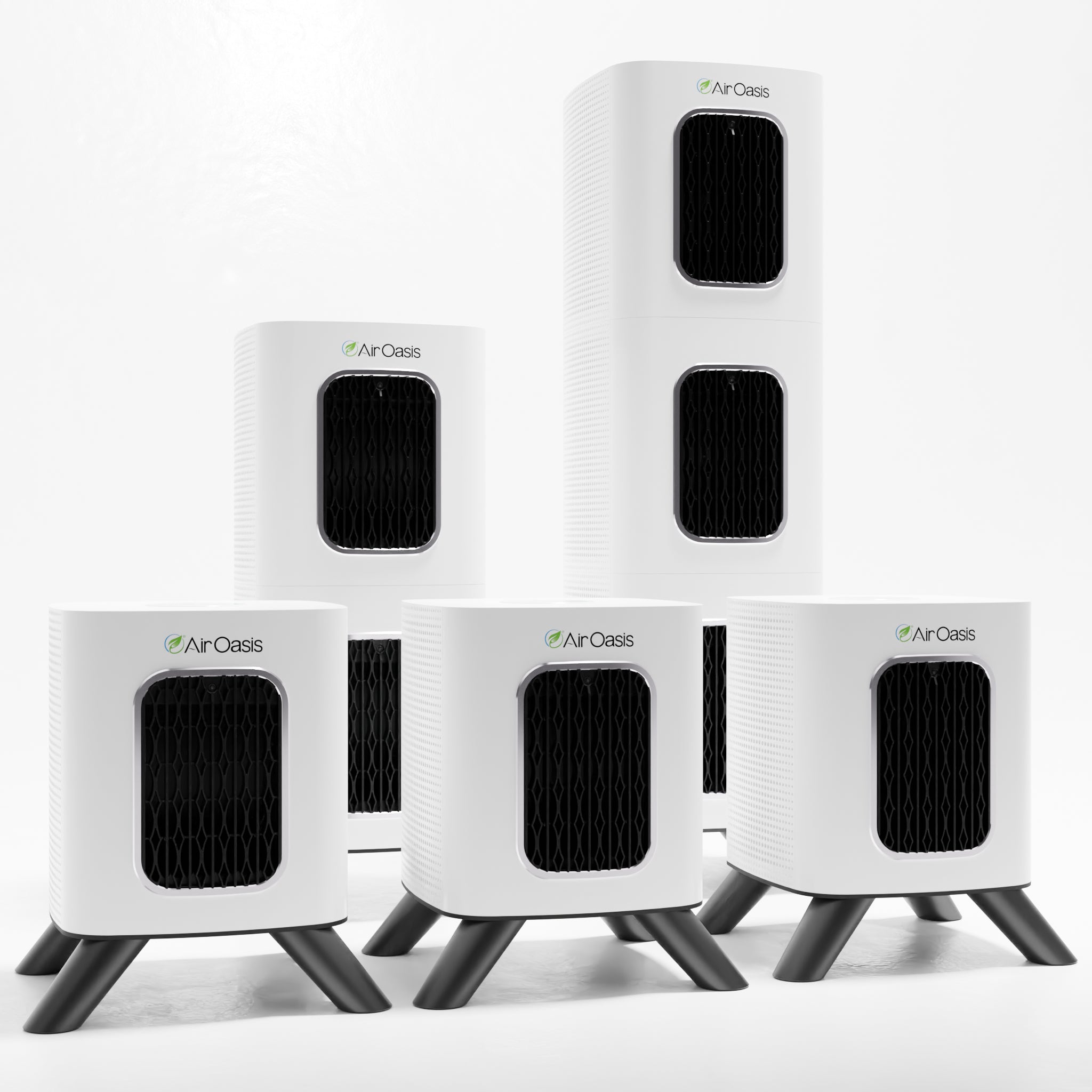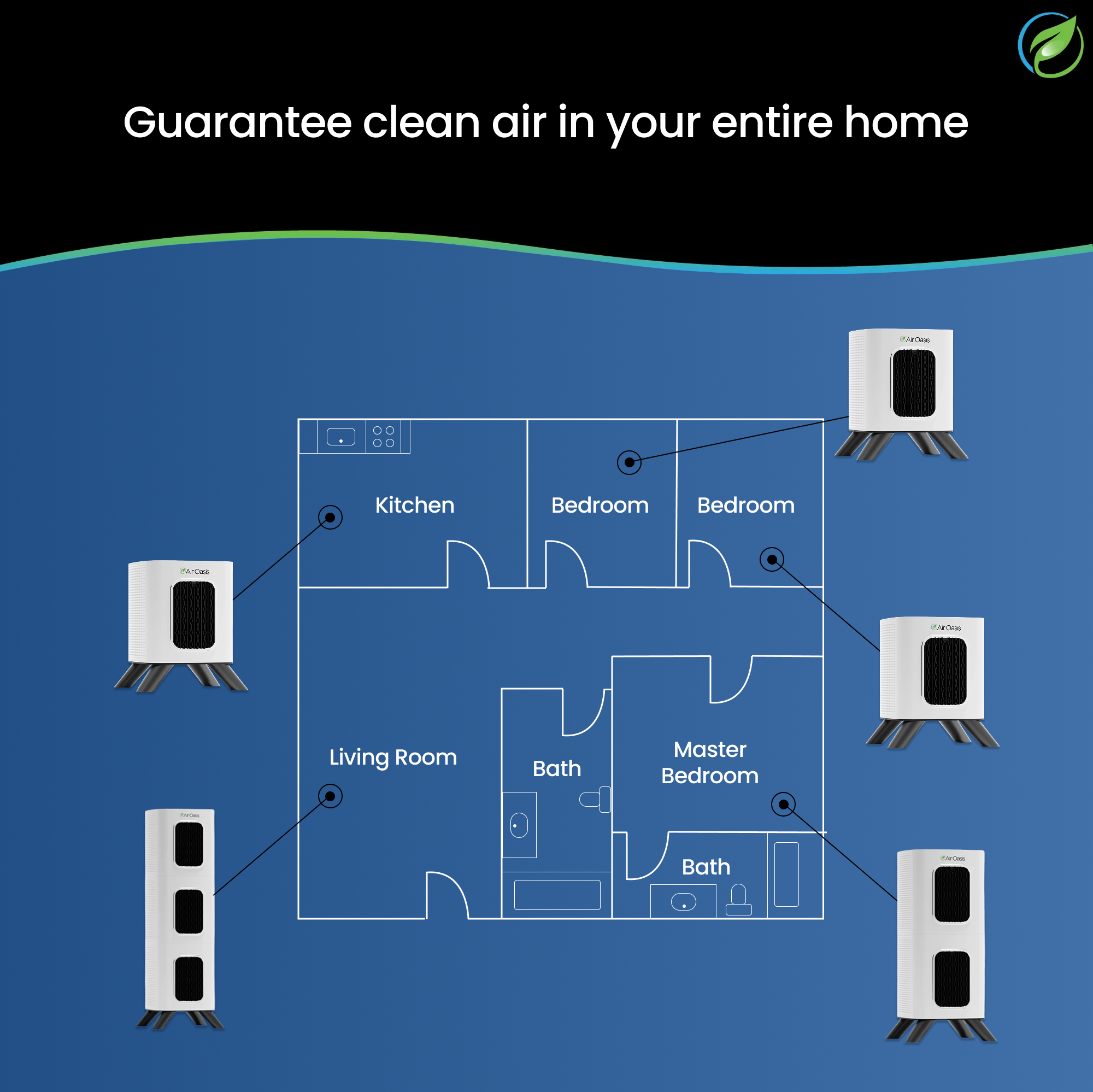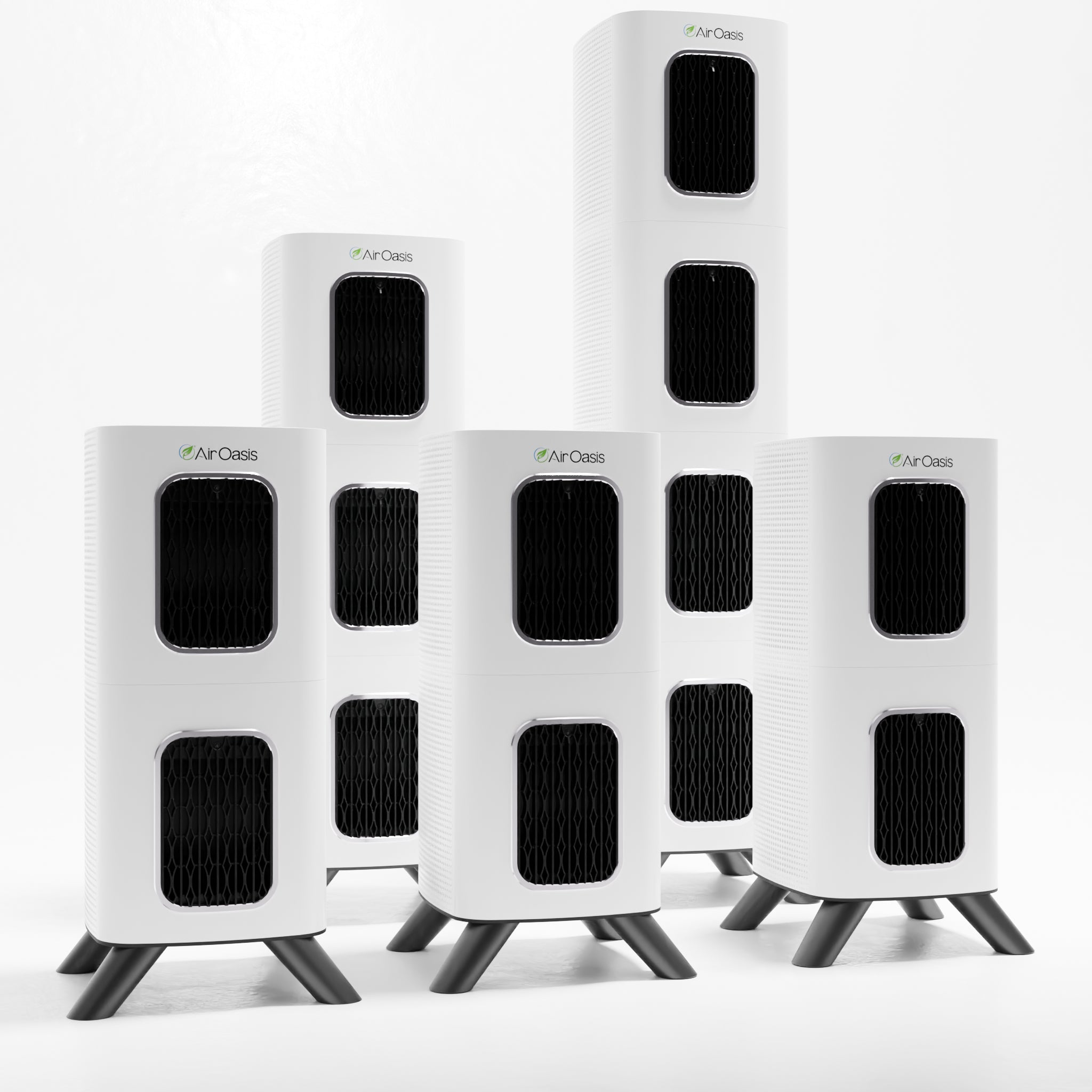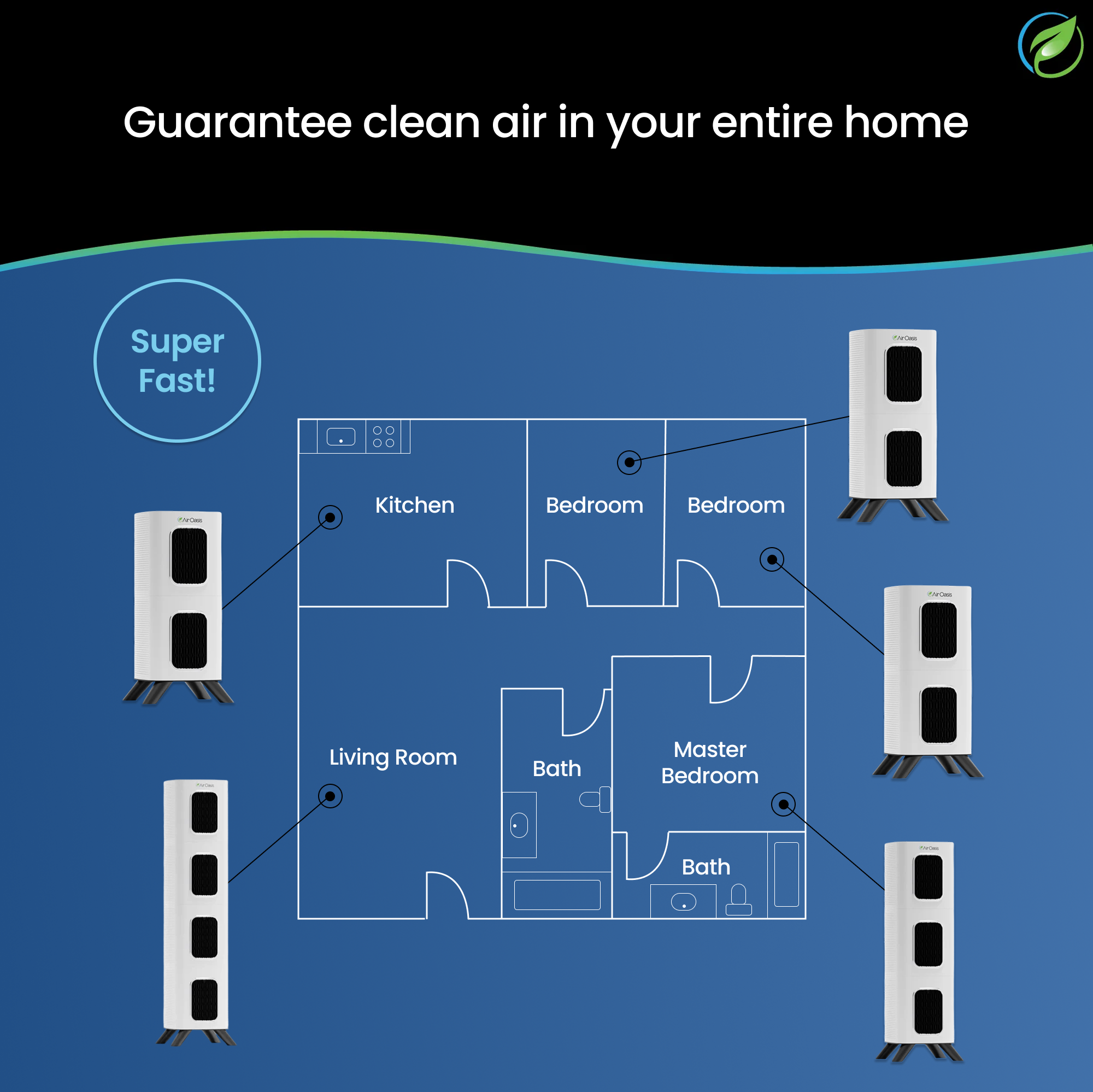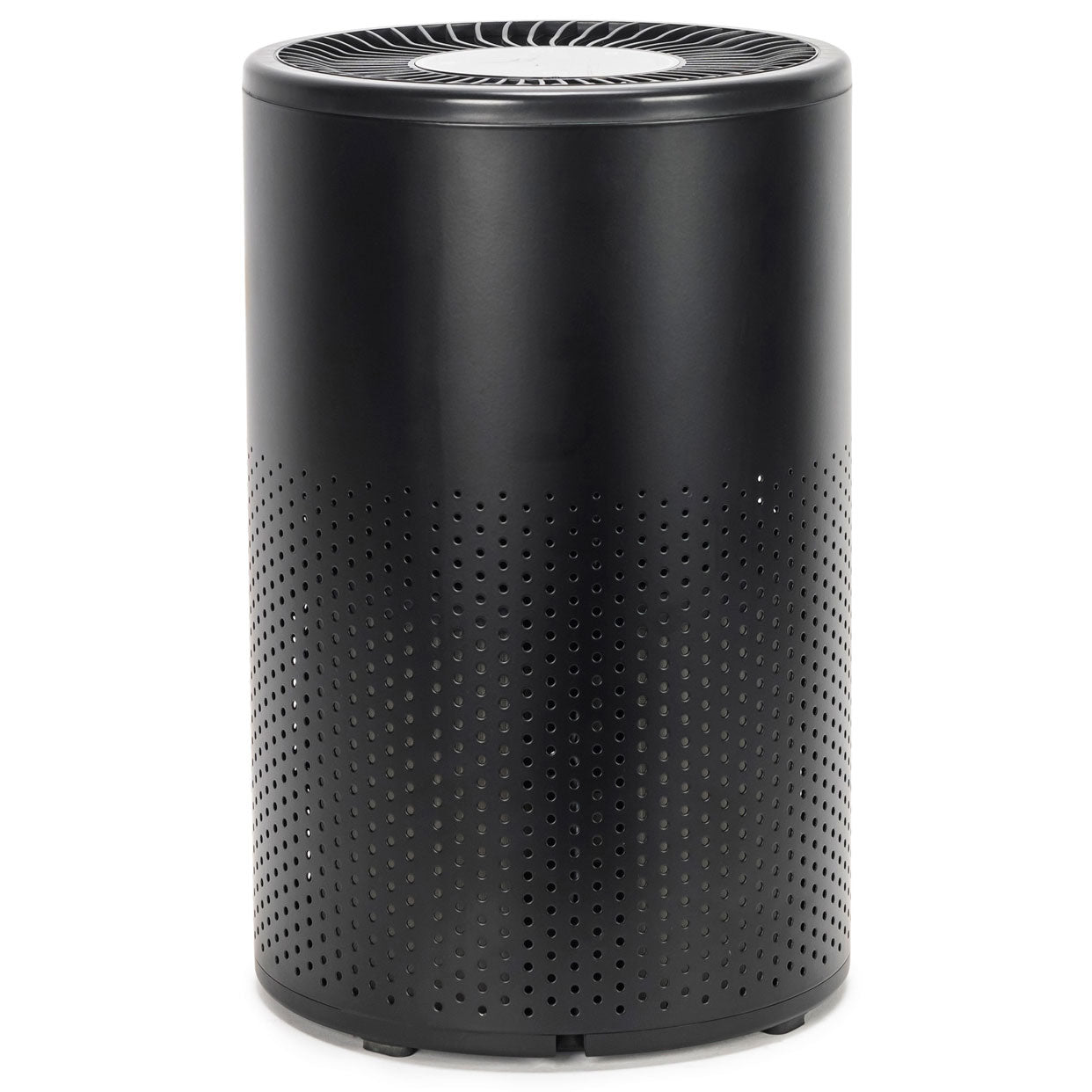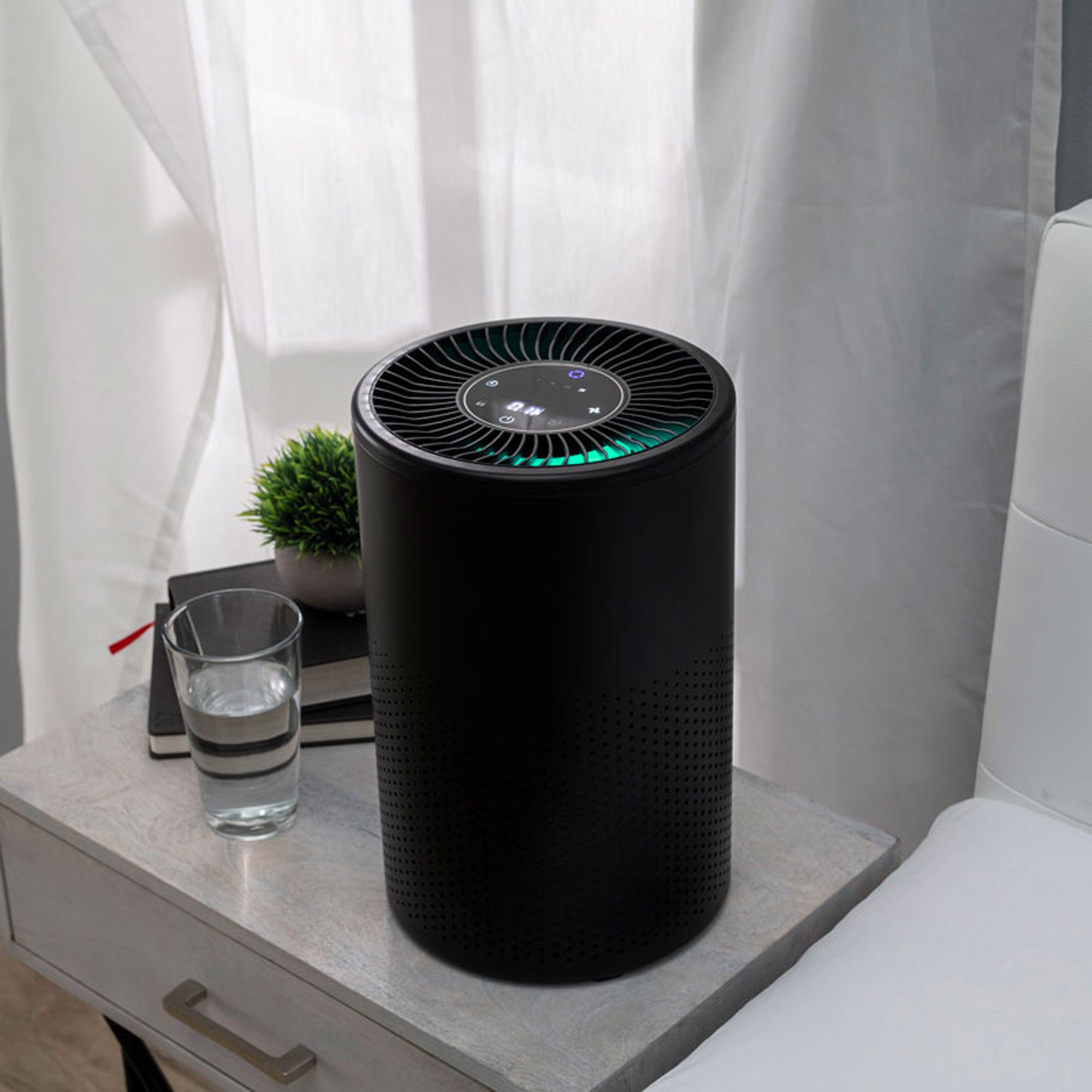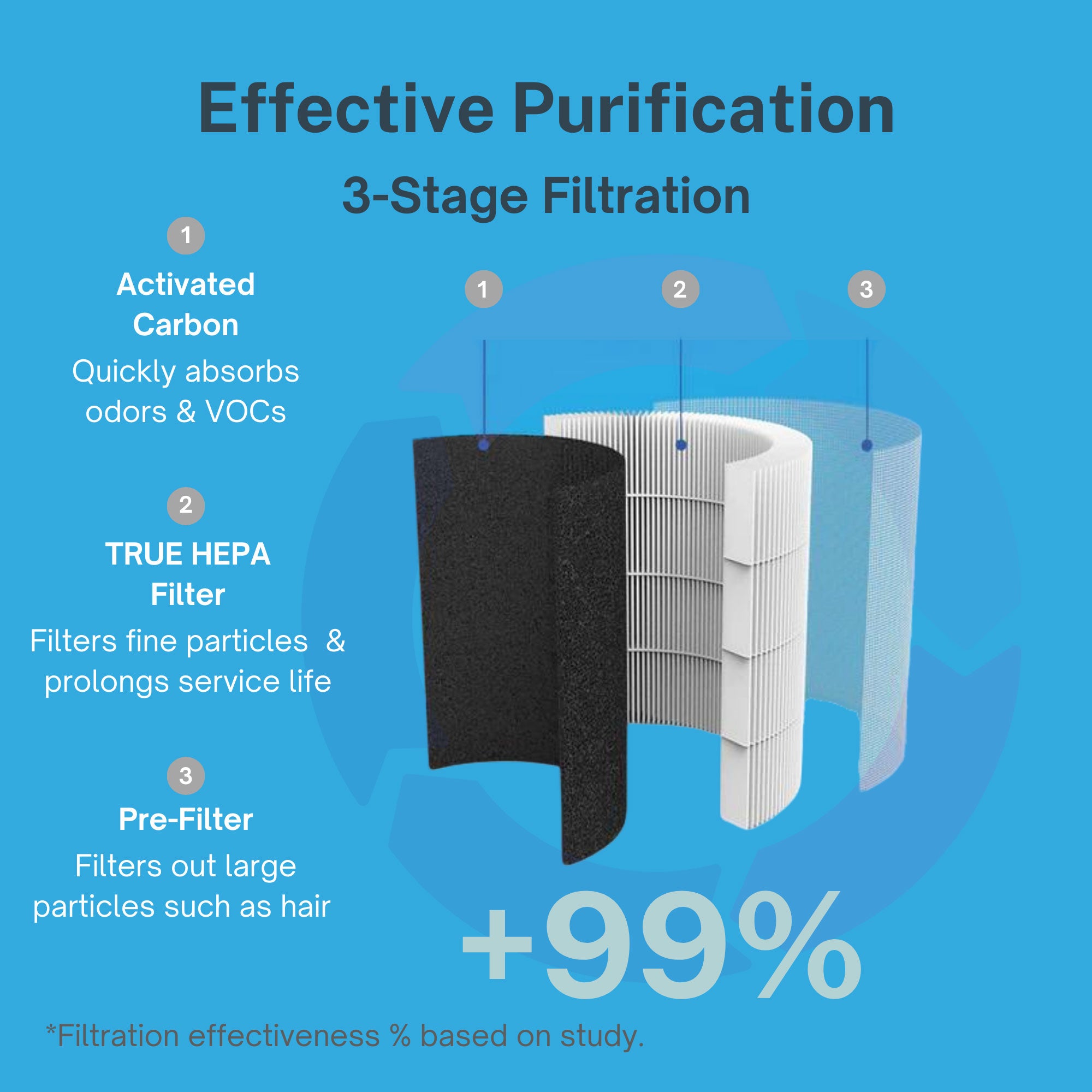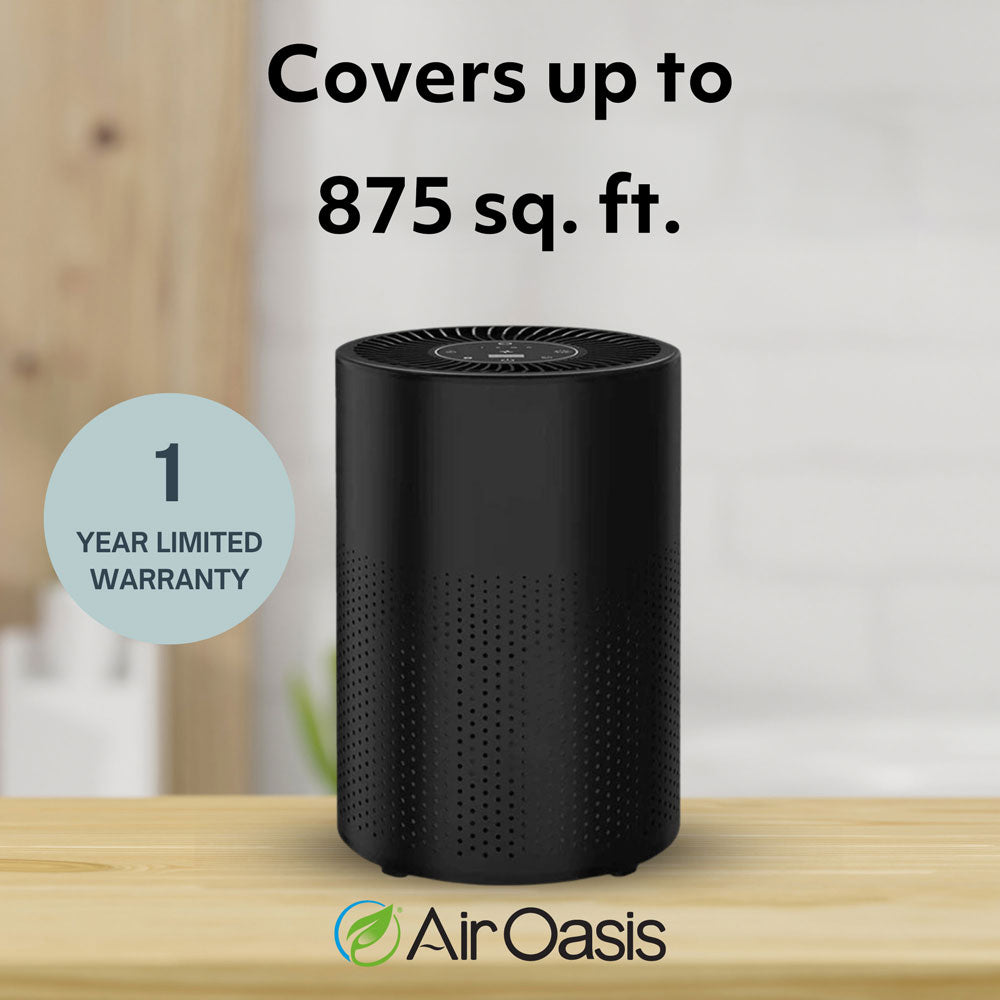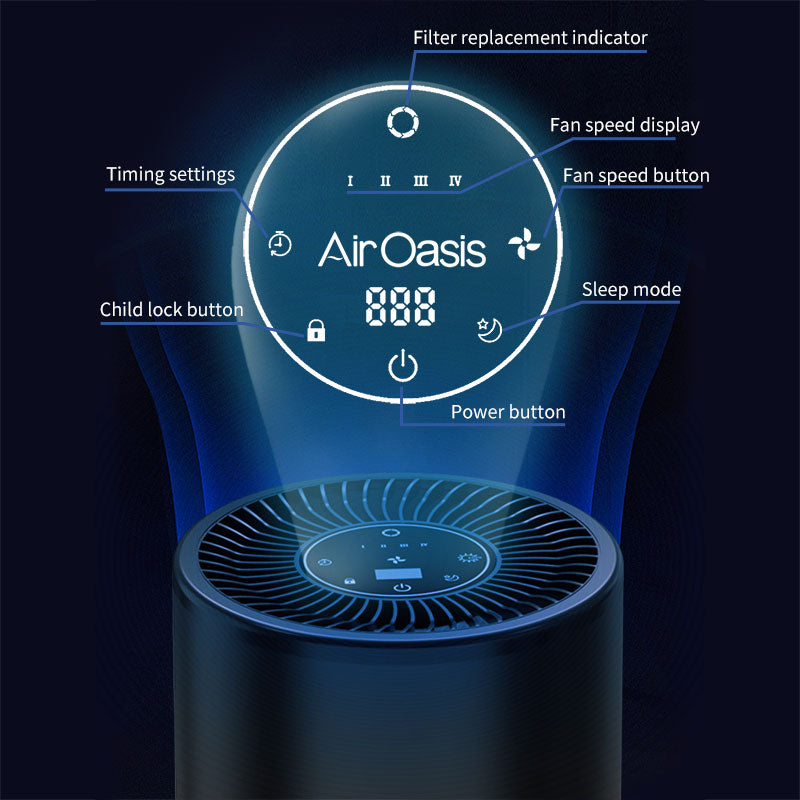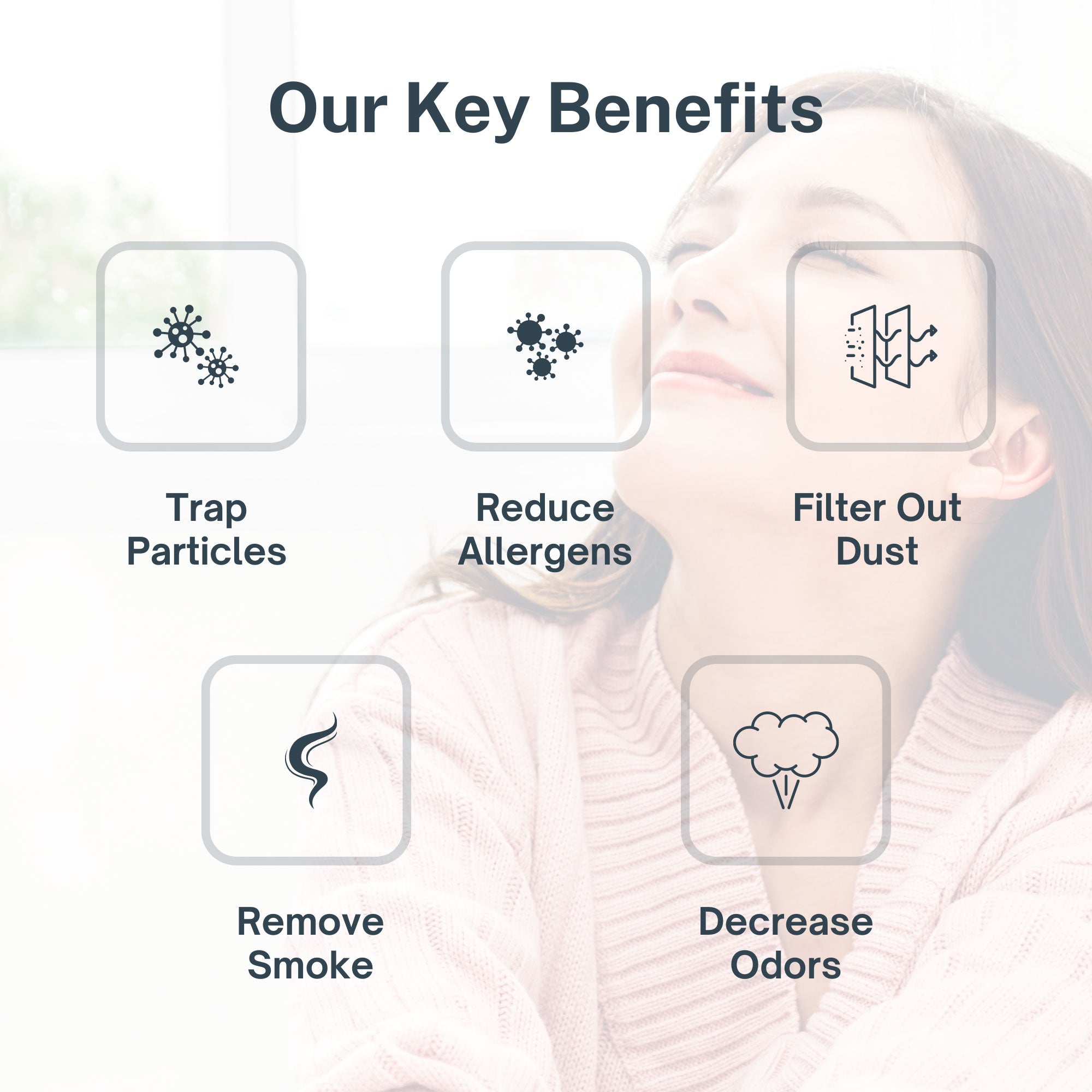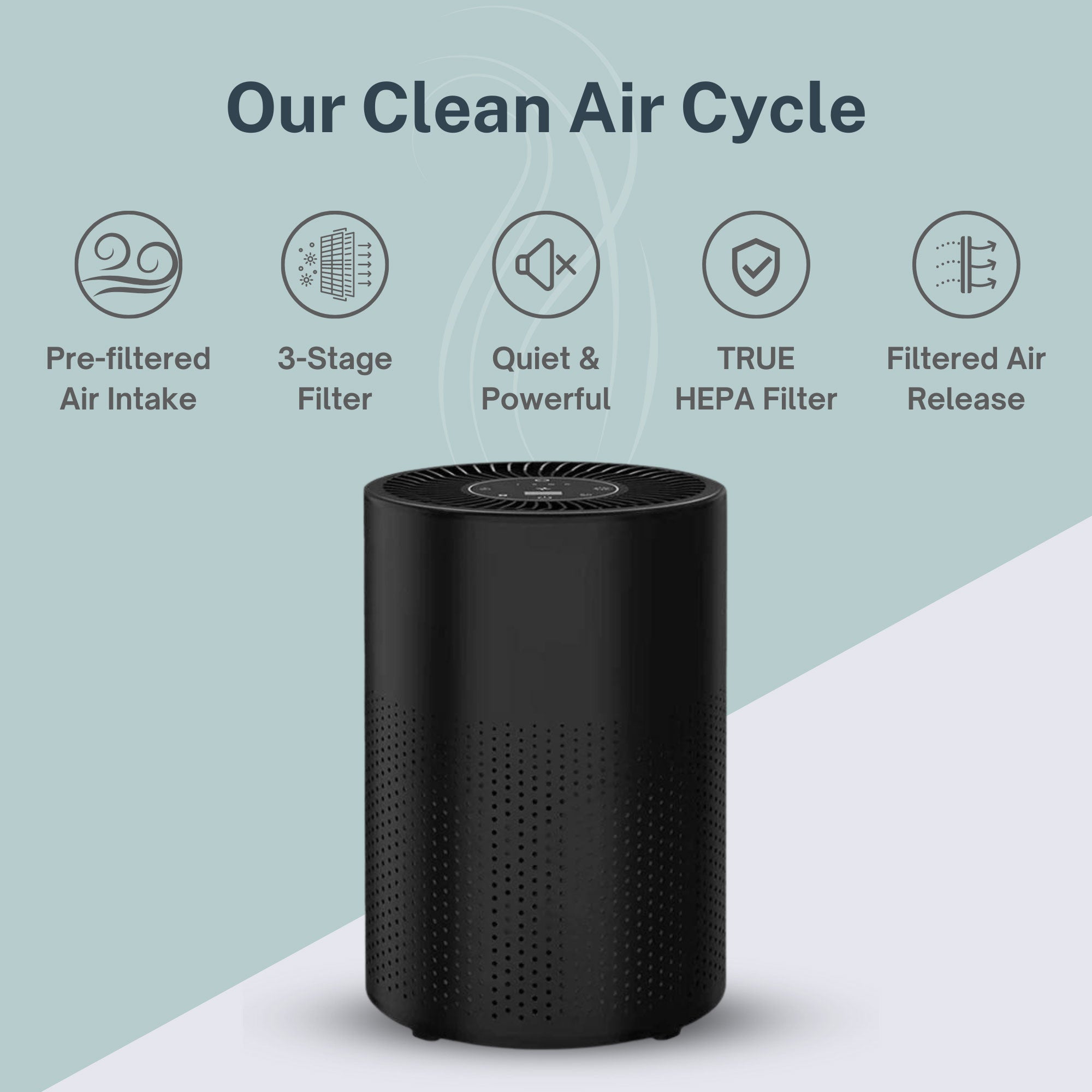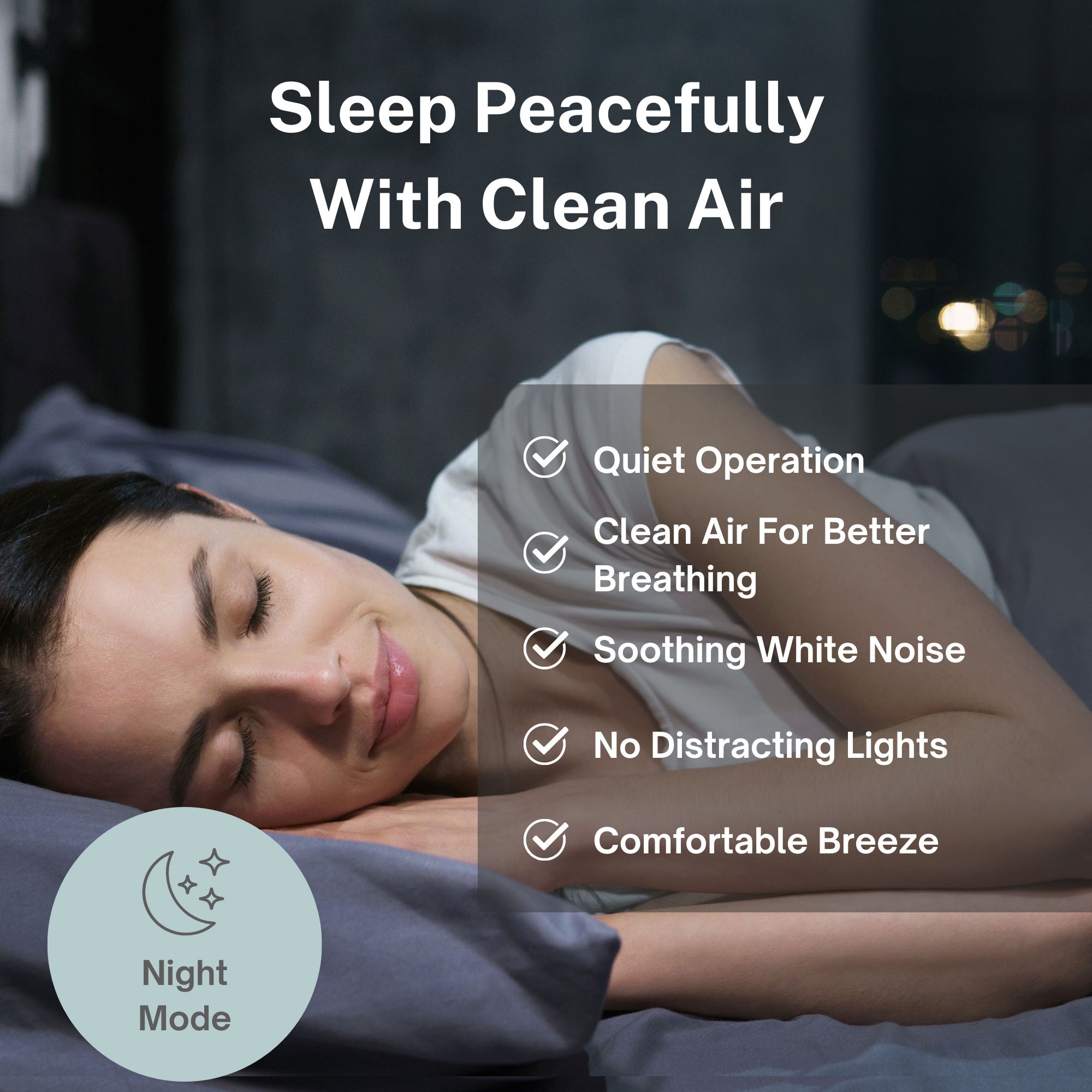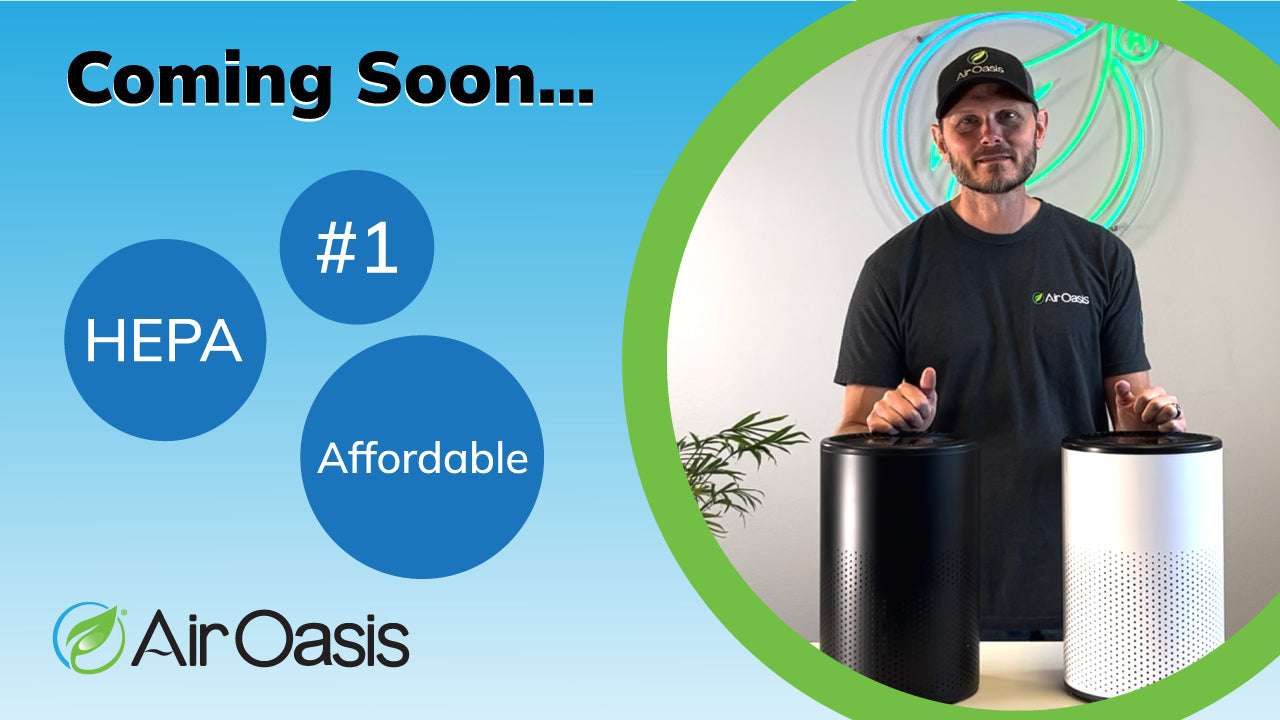Updated 6/7/2023
For years, the experts at Air Oasis have provided air purification for people impacted by frequent wildfires. While many people are familiar with west coast wildfires, these devastating occurrences happen across North America.
Most recently, the northeastern United States has experienced wildfire smoke that caused public health officials to issue states of alert and guidance for avoiding the outdoors.
Here are the updates and latest news:
In the last week of May 2023 and into June 2023, large Canadian wildfires have been sweeping the country, with major fires in Quebec, British Columbia, Nova Scotia, Ontario, and Alberta. Hot, dry weather has allowed these fires to persist, and tens of millions of people are under air quality warnings.
The smoke from these fires has swept through the northeastern United States, clouding the skies of states throughout New England and into New York, Pennsylvania, and even into the midwest and south.
Experts are warning older adults, individuals with asthma, young children, and pregnant women to stay indoors and as many as 110 million people were put under air quality advisories. Thousands of people remote a strong smell of wildfire smoke and hazy skies. Airborne irritants from these Canadian wildfires can cause short-term spikes in the concentration of dangerous chemicals and carbon monoxide in the air.
If you’re living in an area affected by wildfire smoke, don’t allow yourself or your loved ones to breathe toxic, polluted air. Shop Air Oasis air purifiers now to protect your home and start breathing easier.
Read on to learn more about the historical trends of wildfires throughout the United States, and the impact exposure to smoke from fires has had on individuals and families.
Wildfire Smoke and Poor Air Quality
Regardless of the underlying causes and changes in climate, one thing is tragic and true: the western United States is on fire. As record heat waves and severe drought set the scene for another brutal year of wildfires in the western United States, people all across the country — even on the East Coast — are reporting hazy skies and poorer air quality.
In fact, as Oregon’s Bootleg Fire continued its two-week rage on July 21st, New Yorkers reported waking up to a fiery sunrise. Data from NASA confirmed that the city’s levels of fine particulate pollution had risen above 170 on the air quality index, a harmful level even for healthy people.
As wildfires intensify and affect air quality across the nation, it’s never been more important to protect your lungs from toxic air. Luckily, Air Oasis offers air purifiers, certified by the California Air Resources Board, that are proven to filter out the particulates and volatile organic compounds (VOCs) associated with wildfire smoke.
Exposure to Smoke From Fires
As of July 26th, 1.5 million acres were on fire in the U.S., caused by 85 individual large fires, burning in 13 states. Two of the largest fires currently burning are California’s Dixie Fire, which is only 22% contained, and Oregon’s Bootleg Fire, which is 53% contained, as of July 26th.
In Oregon, firefighters struggle against more than the wildfire itself; the blaze is so fierce that it’s triggering weather phenomena such as lightning, massive smoke columns and far-reaching ash clouds, as well as the horrifying possibility of fire tornados.
Although the Pacific Northwest is taking the brunt of the beating, much of the U.S. can feel at least some of these wildfires’ effects. As smoke continues to drift over the midwest and northeast, reports of seeing a deep orange sun and hazy skies continue to emerge.
Unfortunately, those aren’t the only effects; people across the upper half of the U.S. continue to report more labored breathing, as well as irritated lungs, noses and eyes. This is an especially unfortunate side-effect amid a surge in COVID-19 Delta variant cases.
Wildfire Smoke Map
When a wildfire burns, it releases fine particulate matter, also known as particle pollution. Although it sounds complex, particulate matter is really just a term for tiny particles, solid or liquid, suspended in the air. If they’re large enough, you can see them float in the light. It can be made of many different things, including organic and inorganic compounds, biological materials, acids, soot, metals, soil or dust.
Everyone breathes it in, both indoors and outdoors. Although ubiquitous, particulate matter becomes dangerous in two scenarios: when it lingers in high concentrations and when it is fine particulate matter, also called PM2.5 (particulates with a diameter of 2.5 micrometers or smaller). Fine particulate matter is more dangerous because it can pass into the bloodstream and cause respiratory infections. Unfortunately, about 80% of smoke is fine particulate matter.
The large wildfires currently burning in multiple states across the country (as well as Canada) are releasing high concentrations of fine particulate matter into the air, which is traveling to cities thousands of miles away, covering large swaths of the country. To see a visual representation, check out the map created by the National Oceanic and Atmospheric Administration that models the pollution’s movement.
How Smoke From Fires Affect Your Health
Wildfire smoke poses a distinct risk to respiratory and cardiovascular health, especially with frequent or prolonged exposure. Not only does wildfire smoke contain high concentrations of fine particulate matter, but the composition of that matter is highly variable depending on what’s burning.
When a person inhales fine particulate matter, it can become lodged deep within their lungs, triggering the body to produce an immune response, much like it would when detecting a virus. However, immune cells can’t break down fine particulate matter, and their continued effort results in long-lasting inflammation.
Wildfire Smoke Health Effects
Short-term exposure to wildfire smoke can cause burning eyes, a runny nose, coughing, wheezing and difficulty breathing. For people with heart disease, breathing wildfire smoke can cause chest pain, palpitations, fatigue and shortness of breath.
Even if someone doesn’t have heart disease, research suggests that wildfire smoke can trigger cardiac arrhythmias and may even accelerate atherosclerosis (plaque buildup in the arteries).
Exposure to wildfire smoke is especially dangerous for people with underlying conditions, including the following:
- Heart disease
- Chronic obstructive pulmonary disease (COPD)
- Asthma
- Emphysema
- Diabetes
- Autoimmune disease
Breathing wildfire smoke is also more dangerous for children because their lungs are still developing, and they breathe in more air per pound of body weight than adults. Pregnant women and the elderly are also more vulnerable than other adults.
At Air Oasis, we know that you’re only as safe as the air you breathe. Our air purifiers effectively remove particulate matter and VOCs, keeping your home safe from toxic wildfire smoke. Not sure which air purifier is best for you? We can help you decide.
COVID-19 and Wildfire Smoke
Exposure to wildfire smoke can, unsurprisingly, increase a person’s vulnerability to COVID-19 by irritating the lungs, increasing inflammation and rattling the immune system. Wildfire smoke can also be more dangerous for people who have or have had COVID-19 because they both put strain on the cardiovascular system.
It’s important to note that exposure to wildfire smoke and COVID-19 infection can cause similar symptoms, including dry cough, sore throat and difficulty breathing. The best way to know which you may be suffering from is to get a COVID-19 test.
Protect Yourself From Wildfire Smoke
According to the Environmental Protection Agency (EPA), there are many effective ways to protect yourself from wildfire smoke during the COVID-19 pandemic, including the following:
- Make a plan with your healthcare provider about how to avoid smoke. This could include making an evacuation plan and stocking up on necessities and medication so that you don’t have to leave the house as frequently.
- Make a clean room in your home that doesn’t have a fireplace, cooking appliances or windows and run an air purifier in that room.
- Buy a portable air purifier with a HEPA filter. Air Oasis offers various sizes of HEPA air purifiers to effectively clean the air in any room by trapping fine particulate matter.
- Buy N95 or KN95 masks. Whereas cloth masks offer little protection from wildfire smoke, these masks can effectively protect you from wildfire smoke, as well as from COVID-19.
Best Air Purifiers for Wildfire Smoke
Hazy, smoke-filled air doesn’t just stay outside; it can enter the home anytime you do. Unless you have an effective air purification method, your indoor air quality can be just as bad as the ambient air quality, or even worse. Air Oasis uses a multi-stage approach to address indoor air quality, leveraging most effective technologies and safest methods for air purification.
CARB Certified
Unless your air purifier has this kind of certification, you shouldn't buy it for wildfire smoke concerns. To achieve California Air Resources Board (CARB) certification, air purifiers must be tested for electrical safety and meet the regulated ozone emission concentration limit. Air Oasis air purifiers are CARB certified.
True HEPA Filtration
To be a true high-efficiency particulate air (HEPA) filter, a filter must be able to capture 99.97% of particles that are .3 microns in size. Air Oasis’ HEPA filter is capable of filtering out particulates down to .1 microns in size.
Carbon Filters
Carbon filters remove VOCs from the air. They are especially important during wildfire season, as VOCs are one component of wildfire smoke emissions. Our activated carbon filtration technology can clean your indoor air from the harmful VOCs in wildfire smoke.
Ionization
Ionization purifies the air when ions emitted from a well-made air purifier interact with unwanted bio-contaminants, rendering them unable to replicate. Air Oasis’ air purifiers offer the most powerful ionizer technology on the market."
Bi-polar, Cold Plasma Ionization
Bi-polar ionization, also called cold plasma ionization, uses simple electricity to split water vapor into positively and negatively charged ions. This charged ion effect causes airborne particles to draw together, grow too heavy to float and fall from the air. Cold plasma is particularly effective at reducing smoke in indoor airspaces. Unlike many air purifiers, Air Oasis’ bi-polar ionization air purifiers can also clean hard surfaces as noted above regarding ionization."
Buy an Air Purifier for Wildfire Smoke
As people across the country take measures to protect themselves and their loved ones from wildfire smoke, it’s important to remember that many common air pollutants are not as immediately noticeable, yet still pose significant health risks. Even in the absence of wildfires, the modern amenities and appliances in our homes and offices produce airborne contaminants dangerous to human health.
At Air Oasis, we know that good health begins with each breath. If you’re ready to start breathing easier, shop our air purifiers today. Not sure what you need? Call us at (806) 373-7788 for help picking out the best air purification system to fit your needs.





